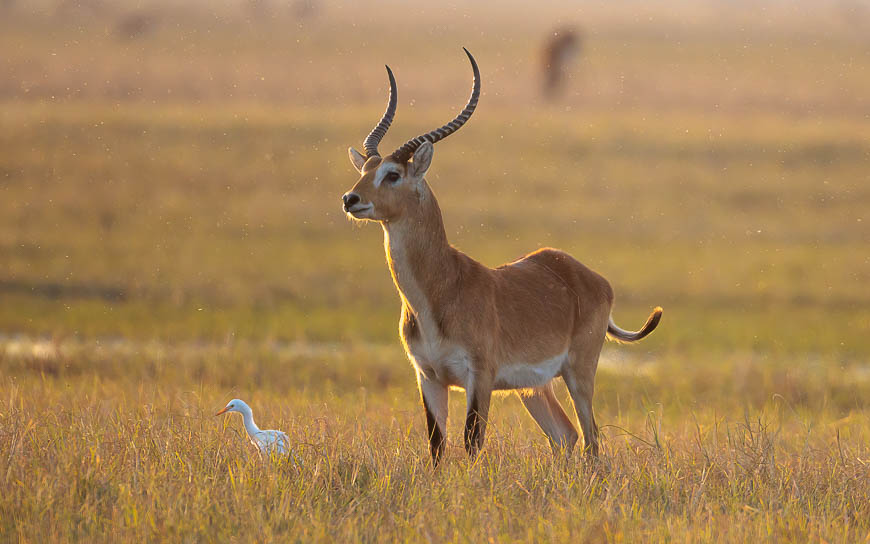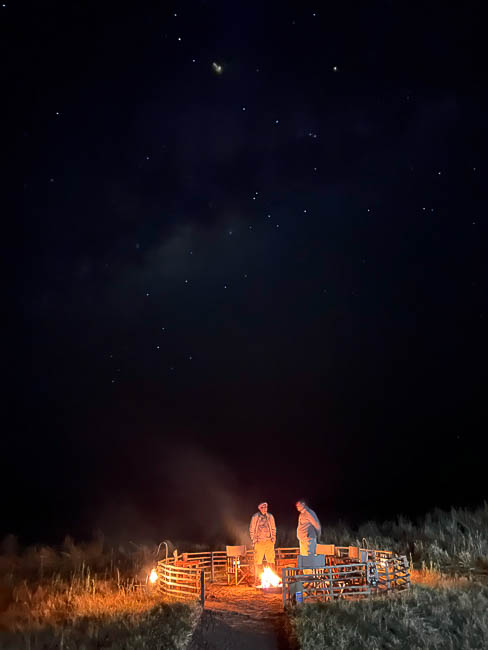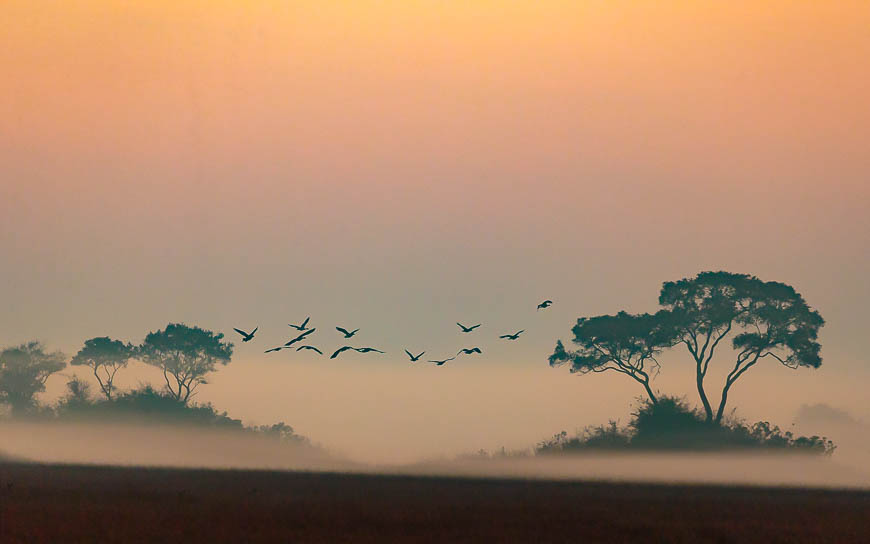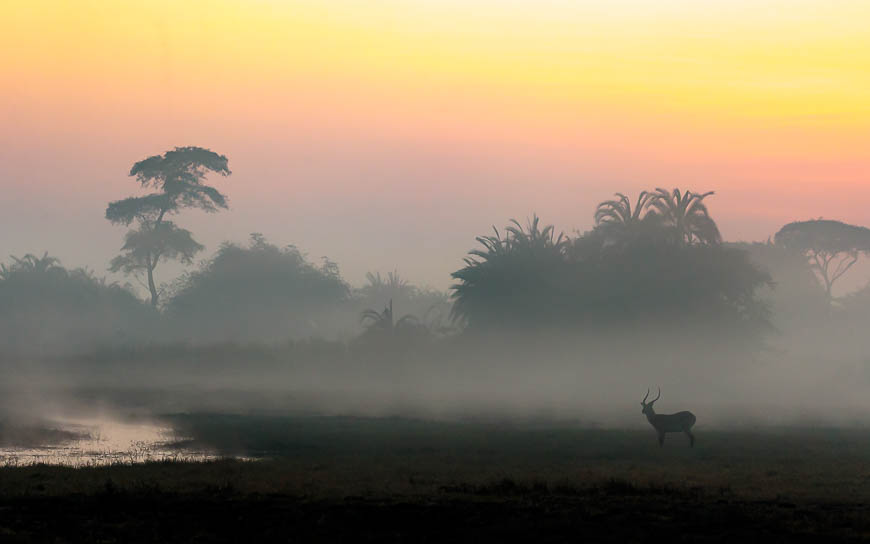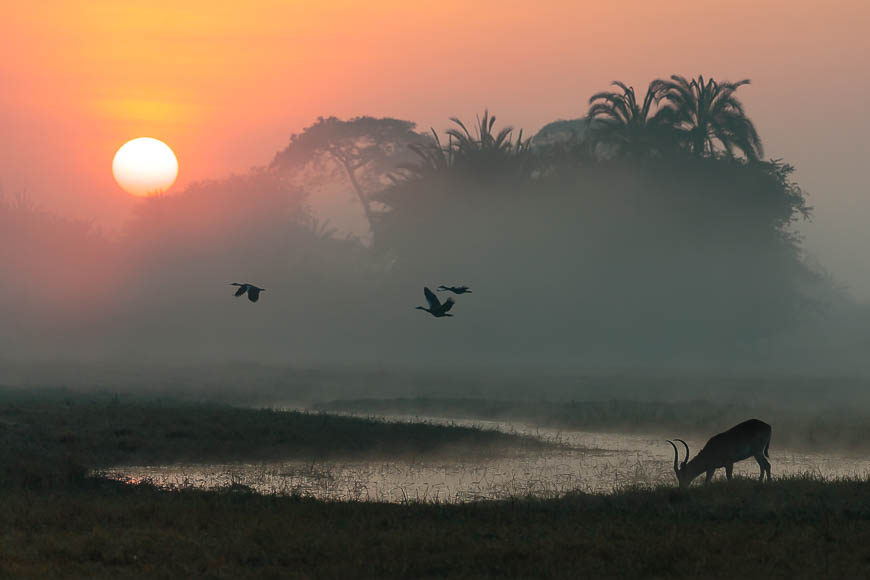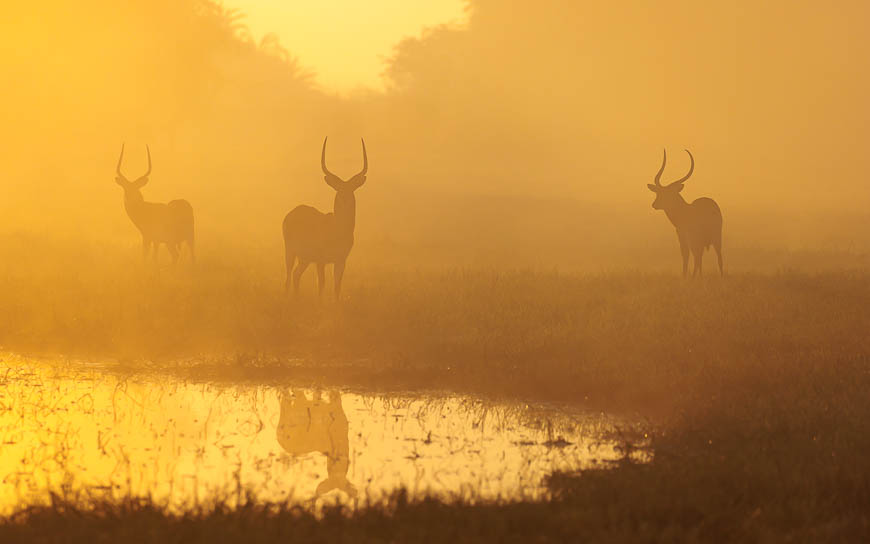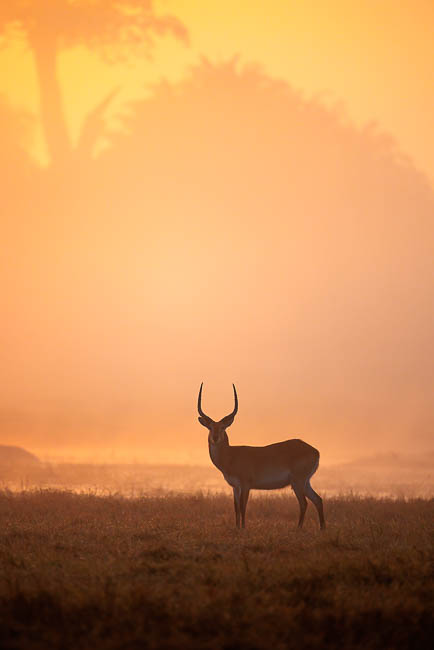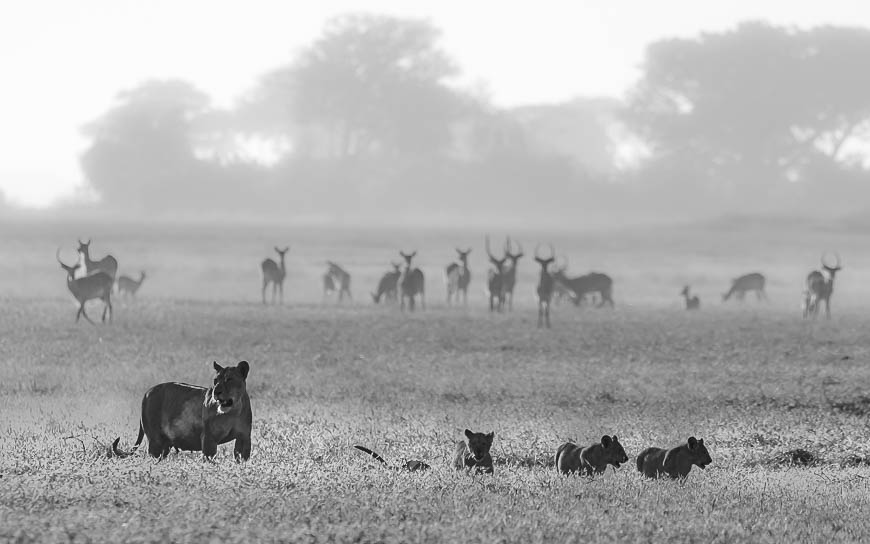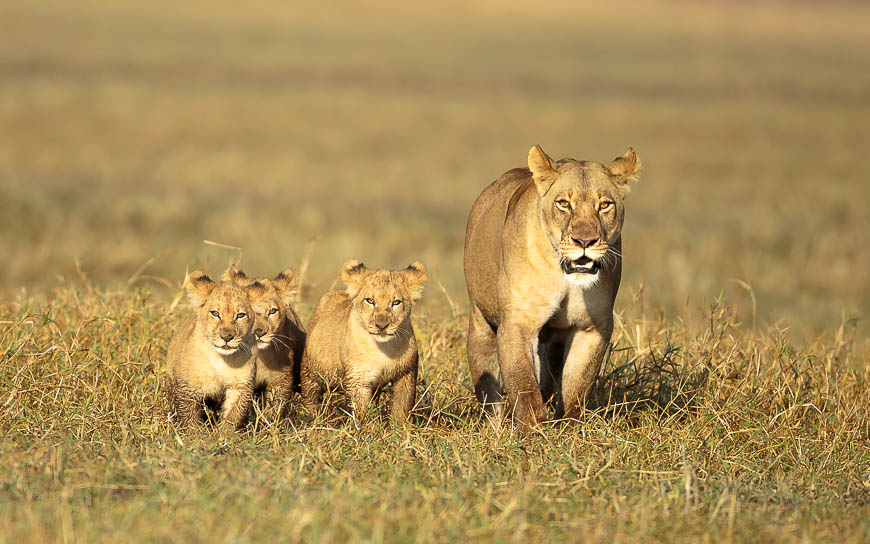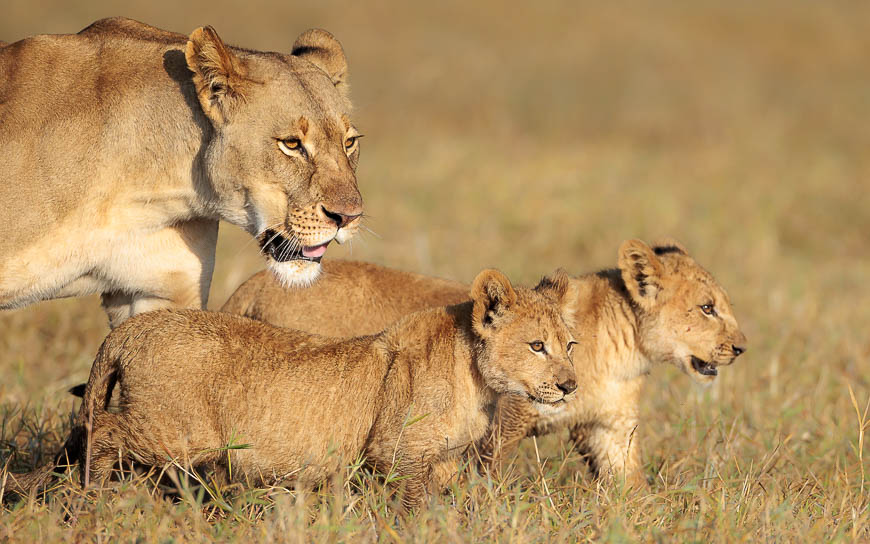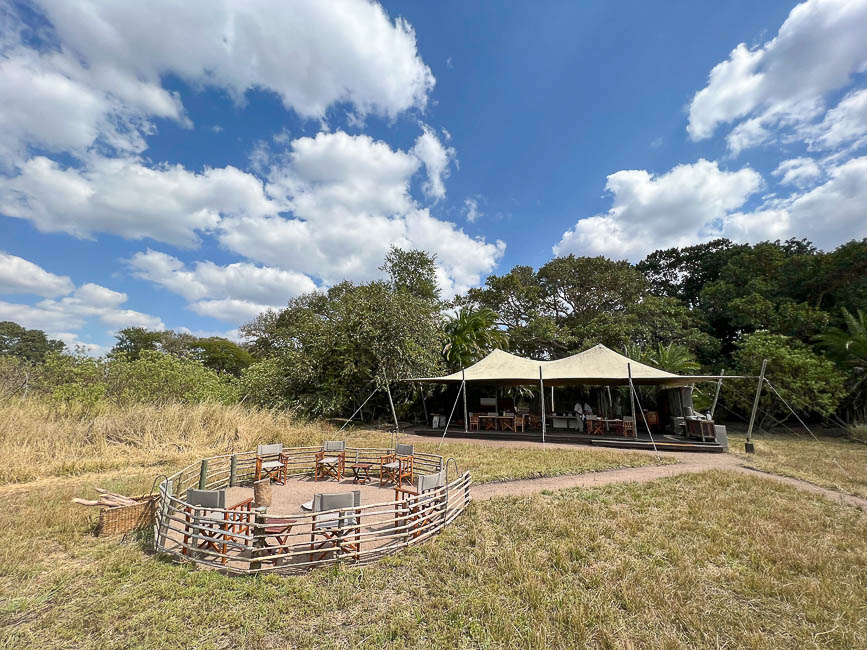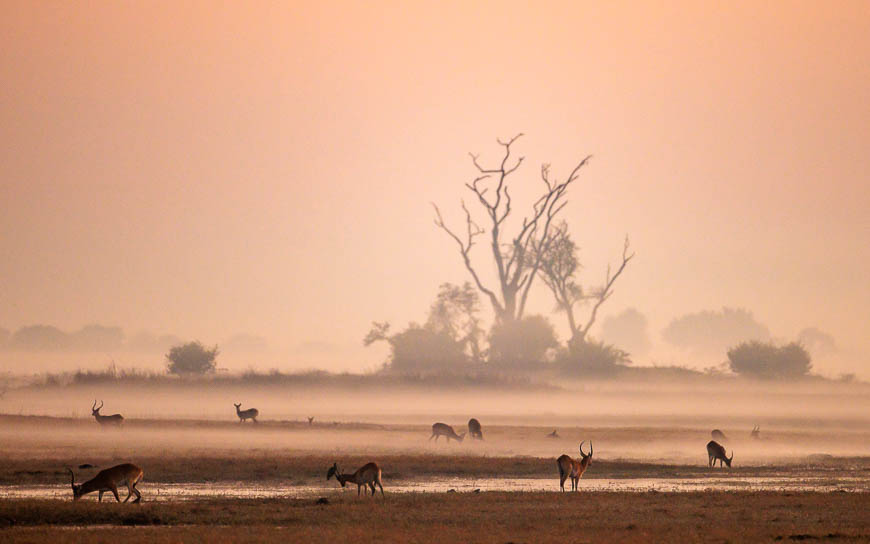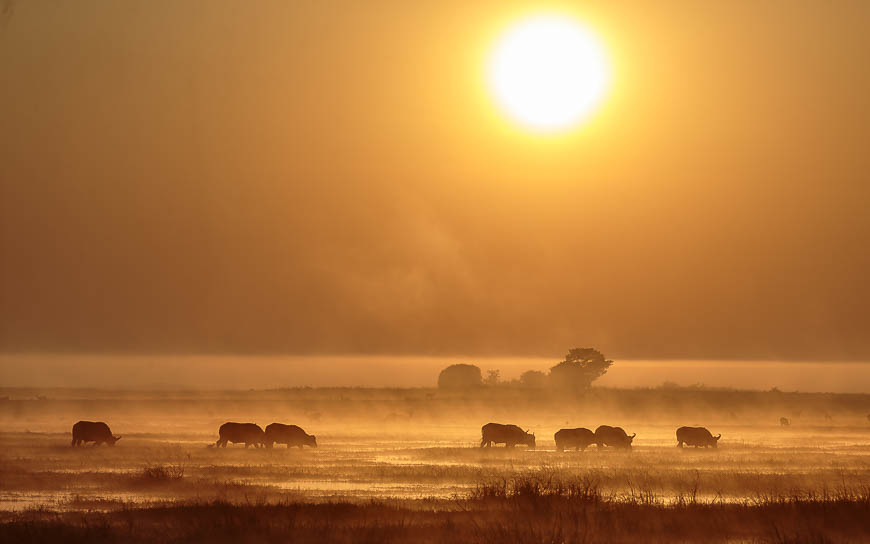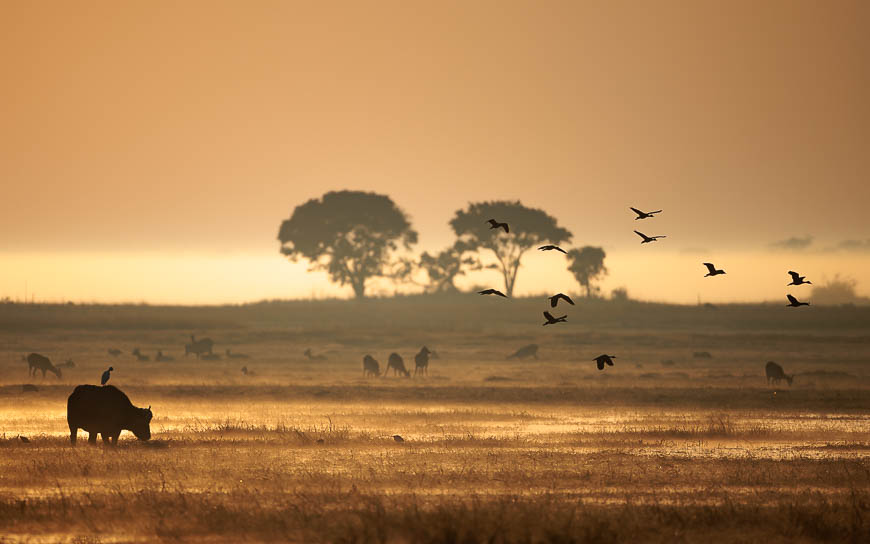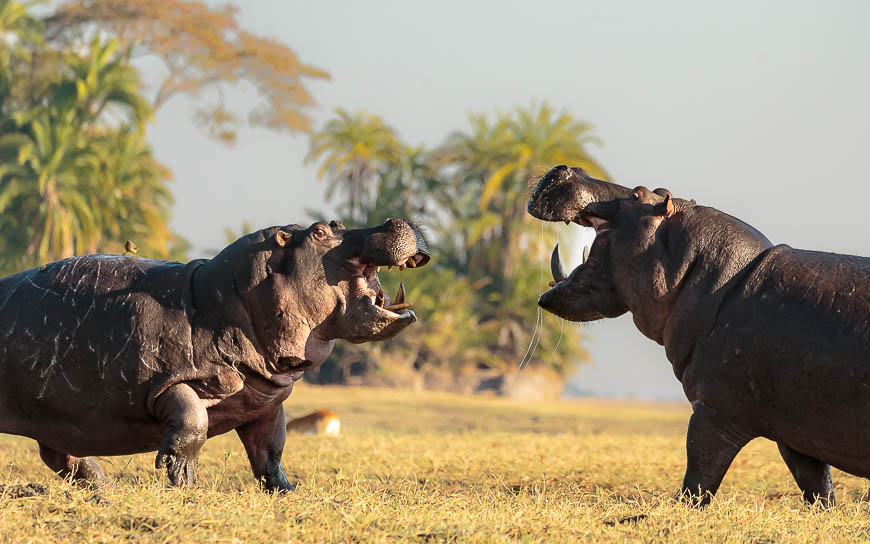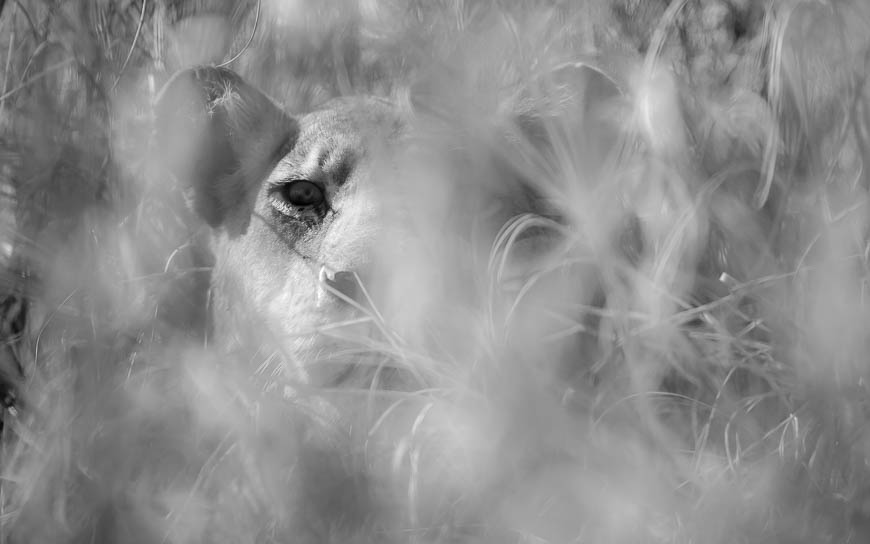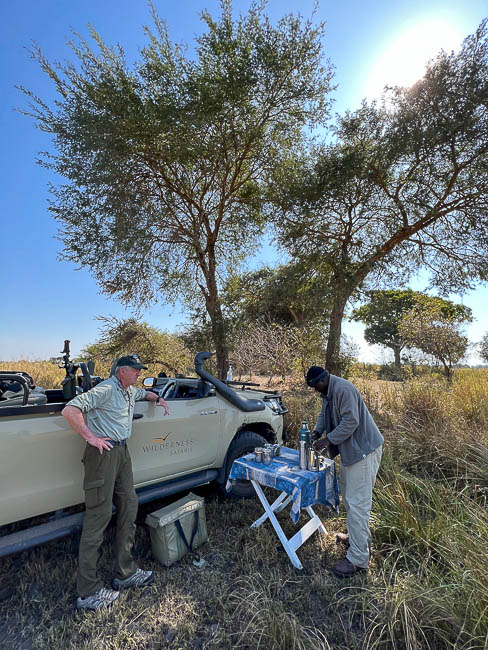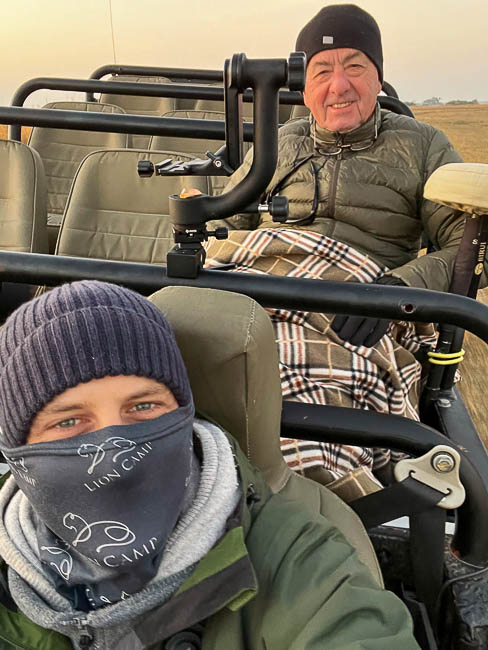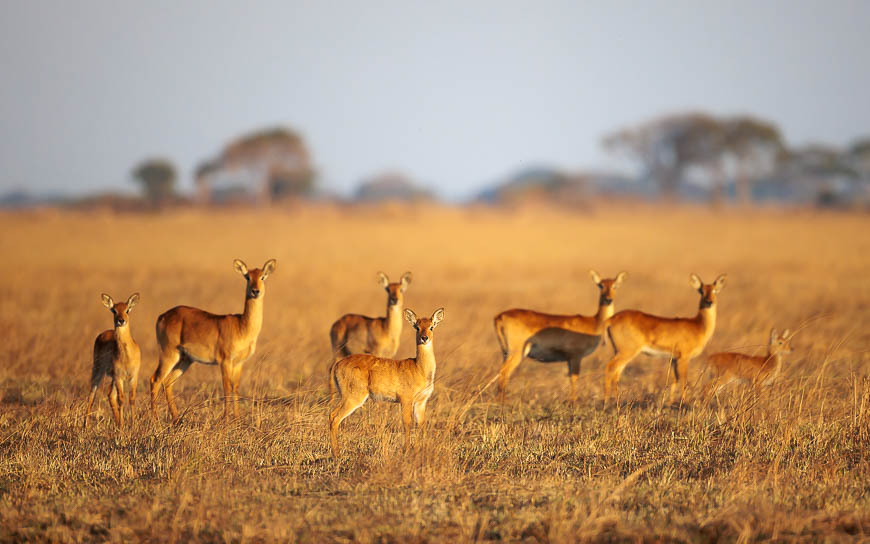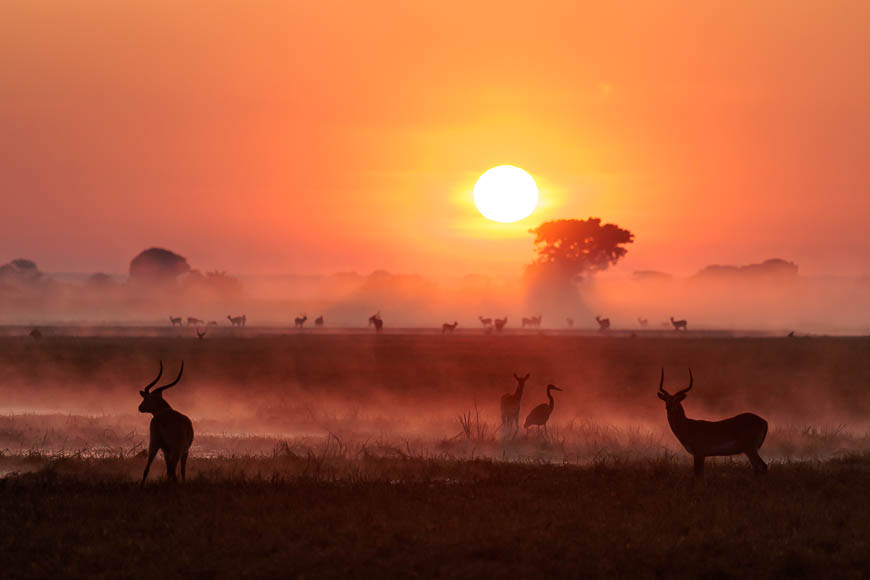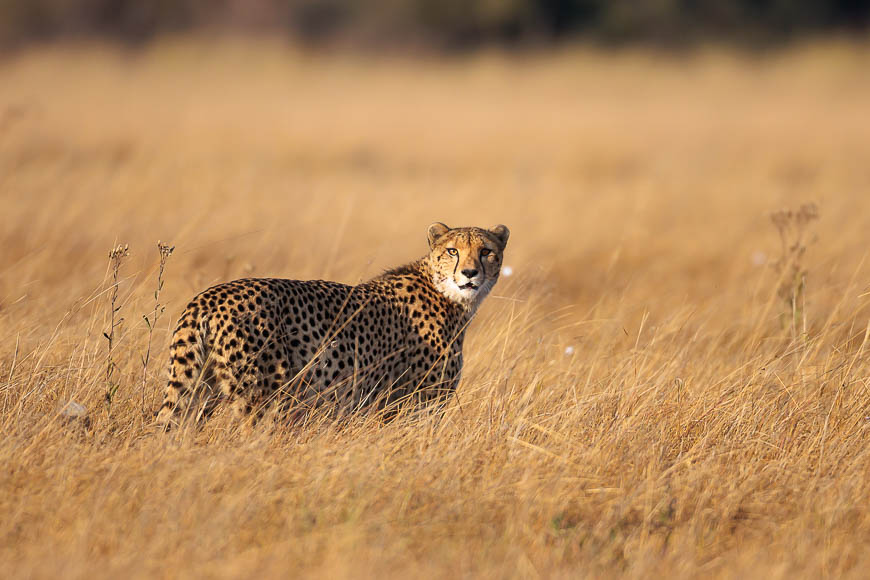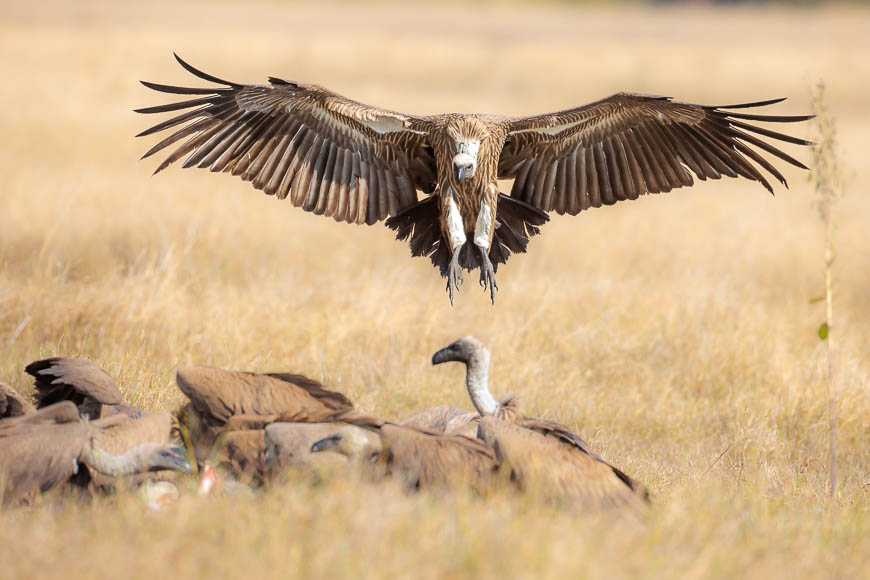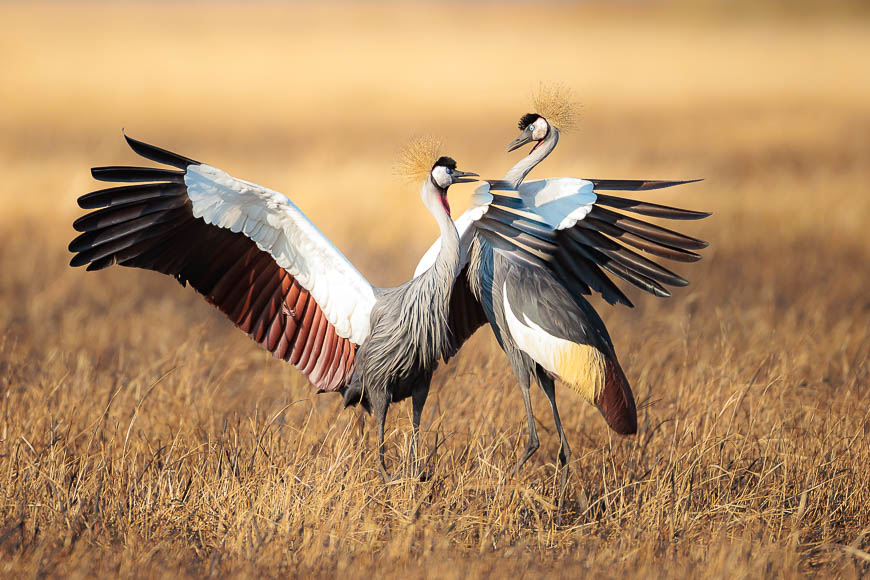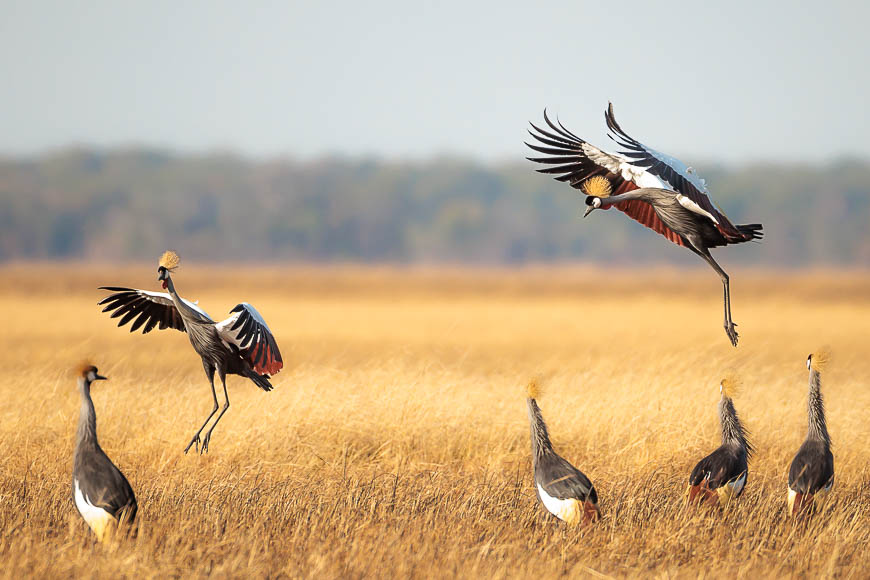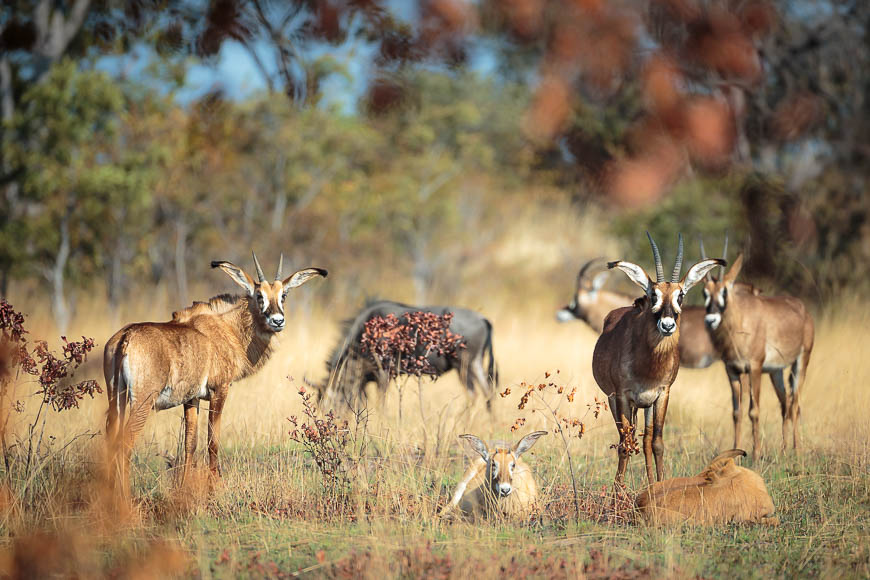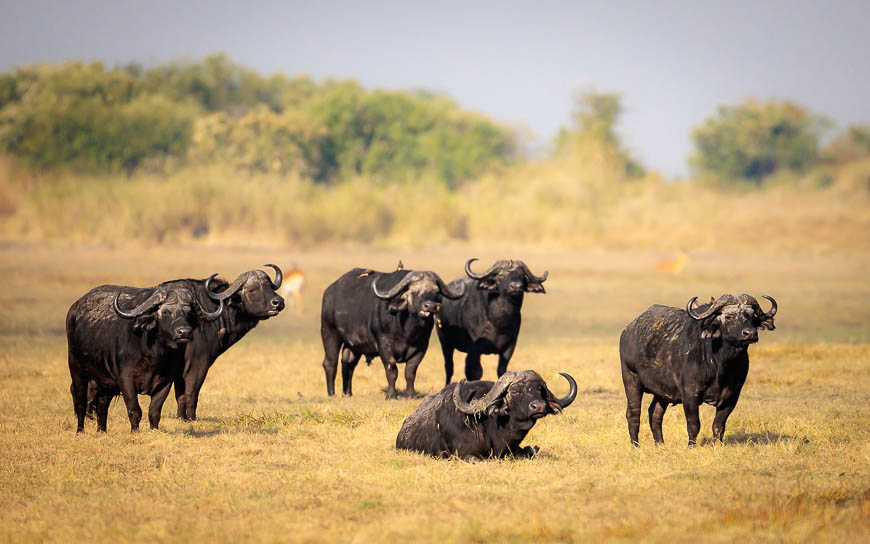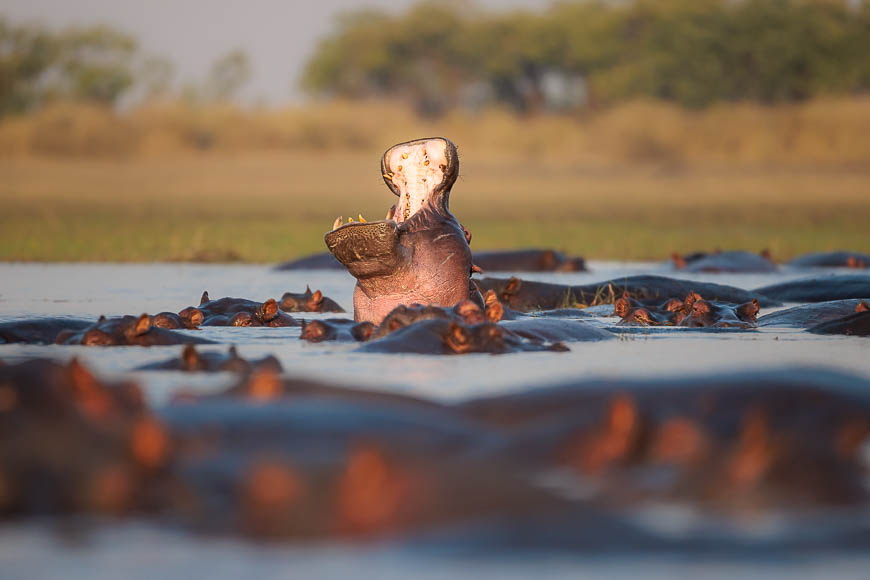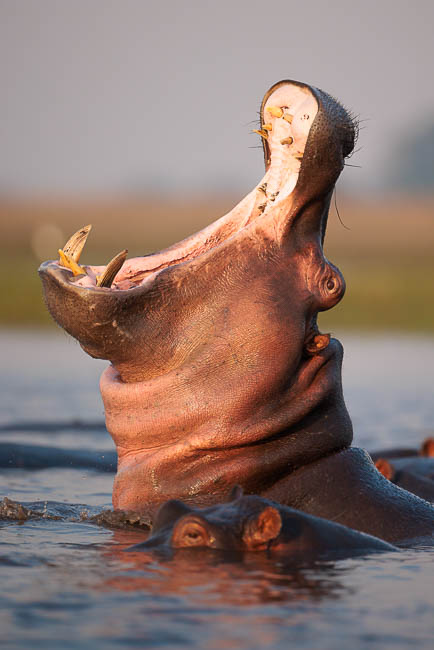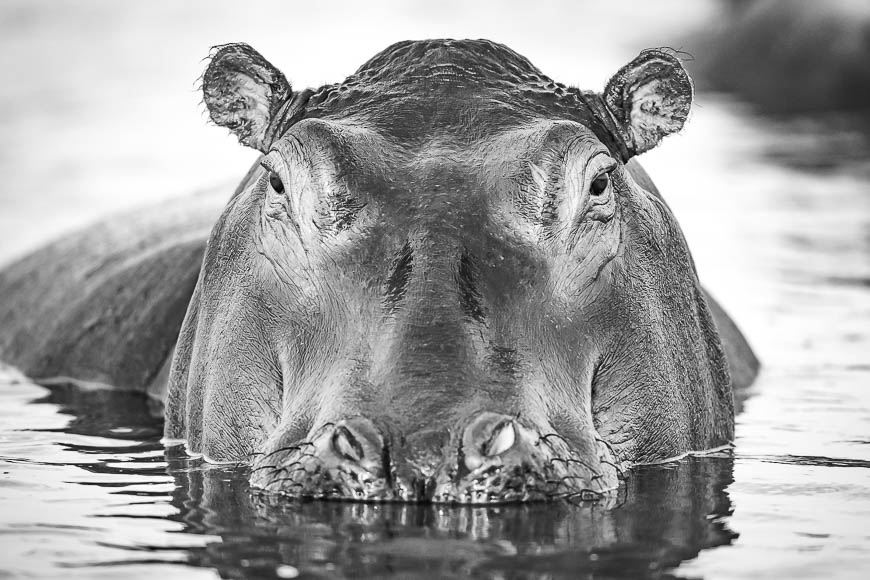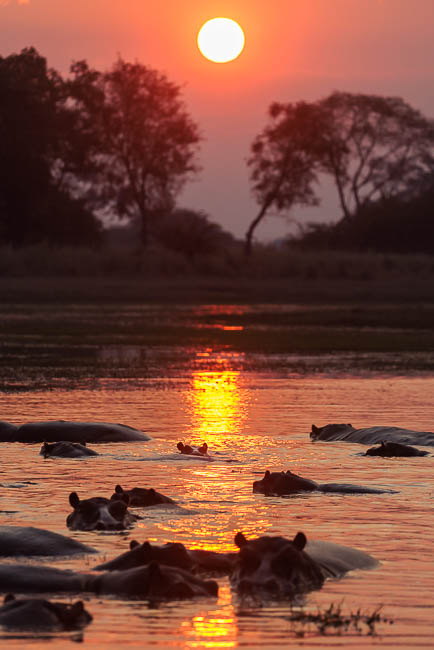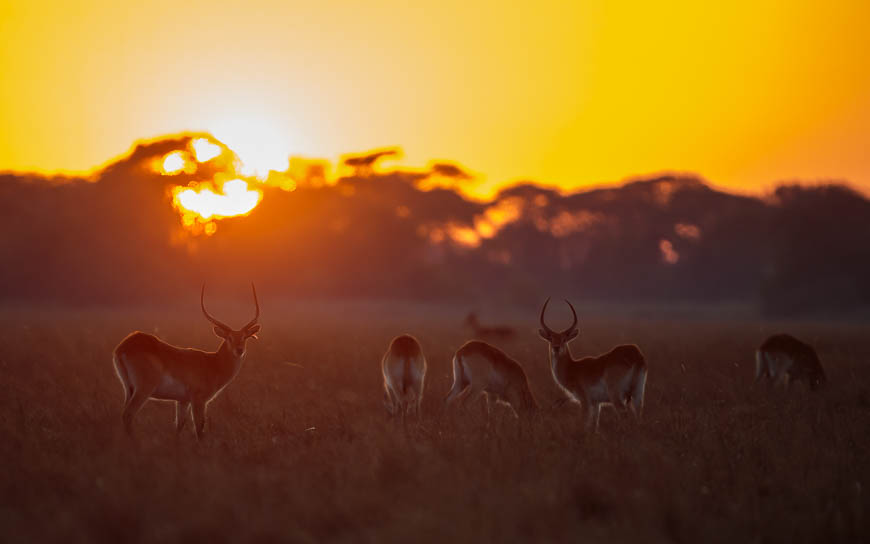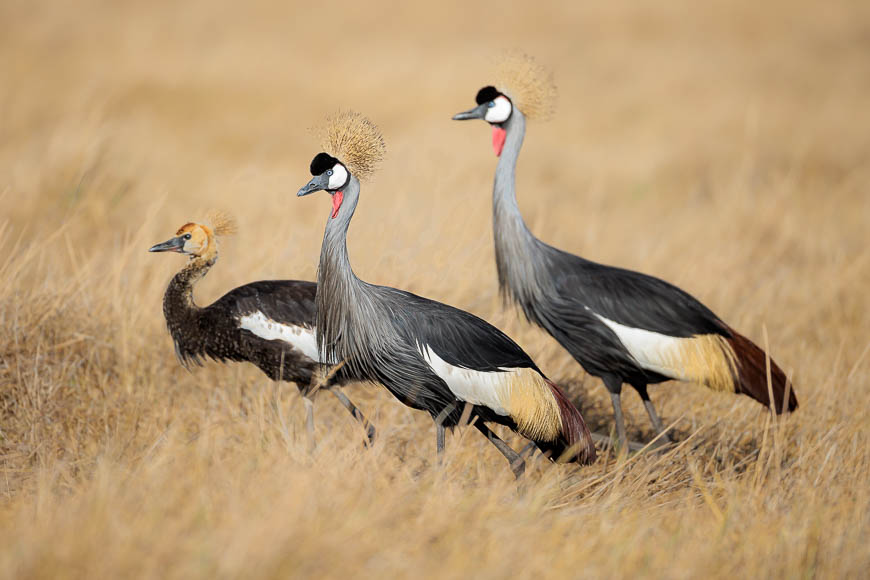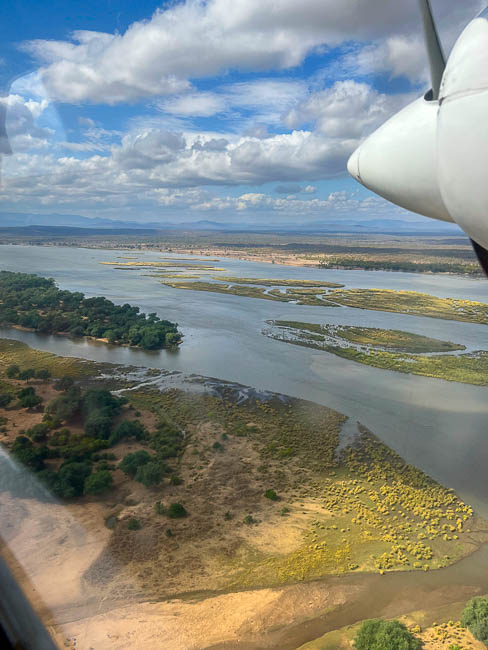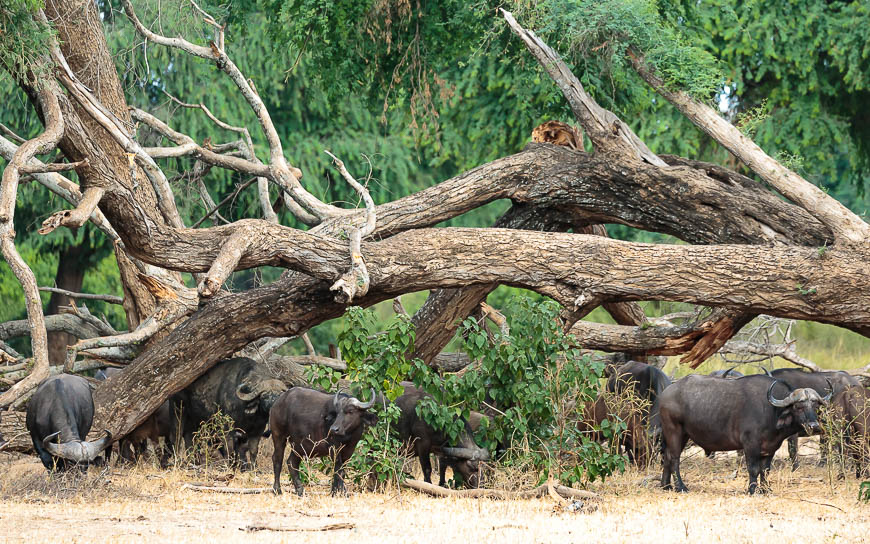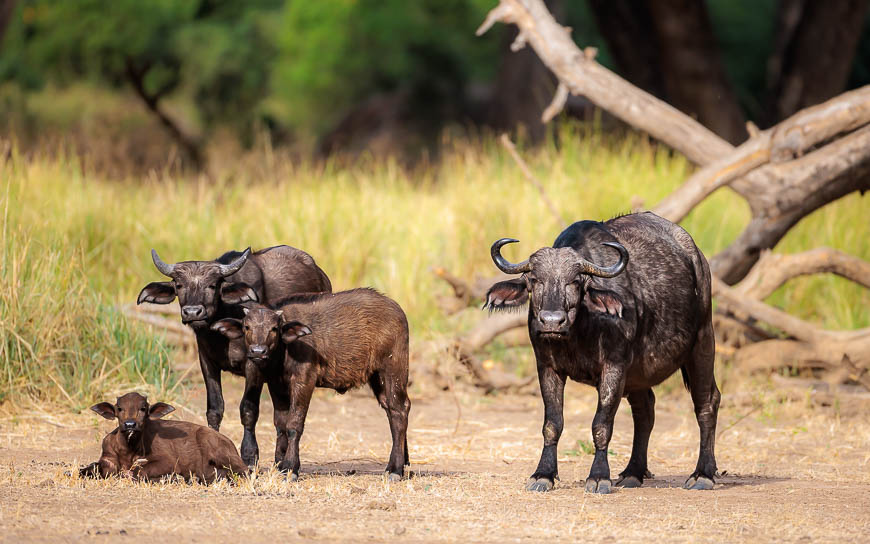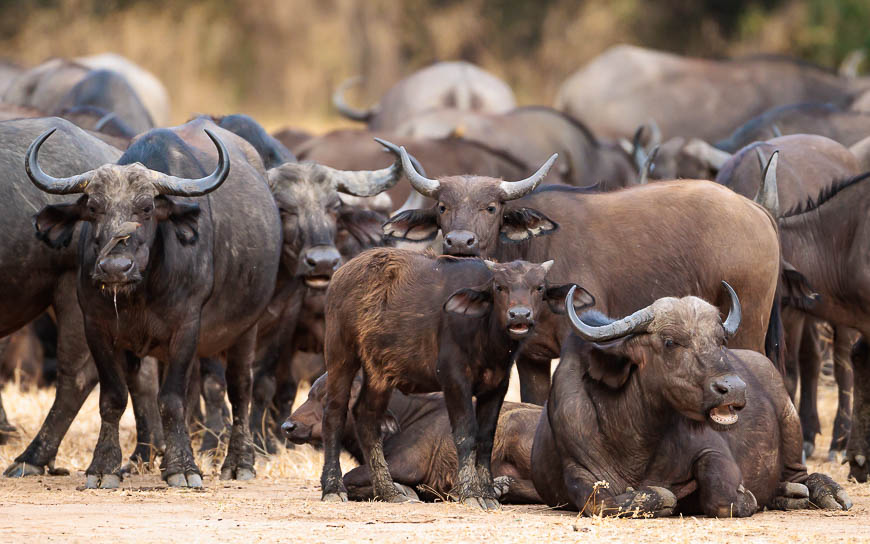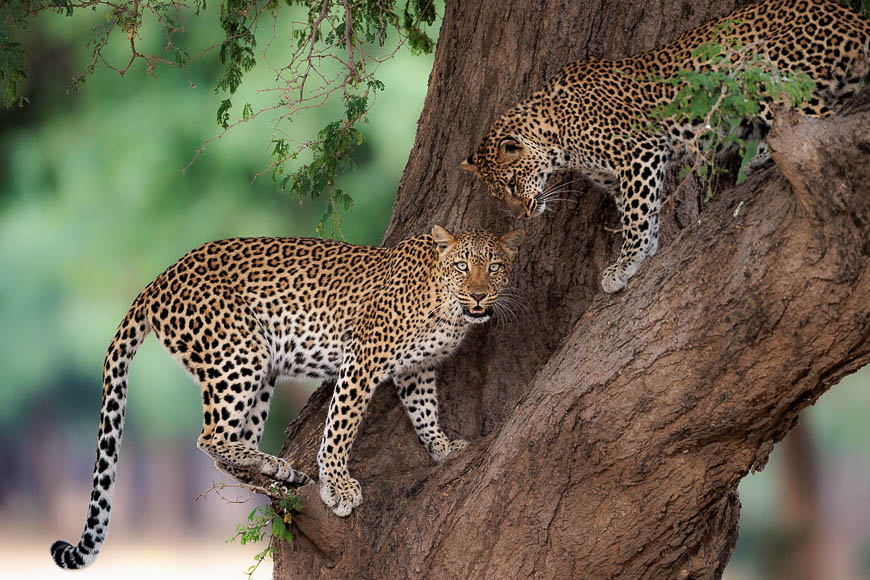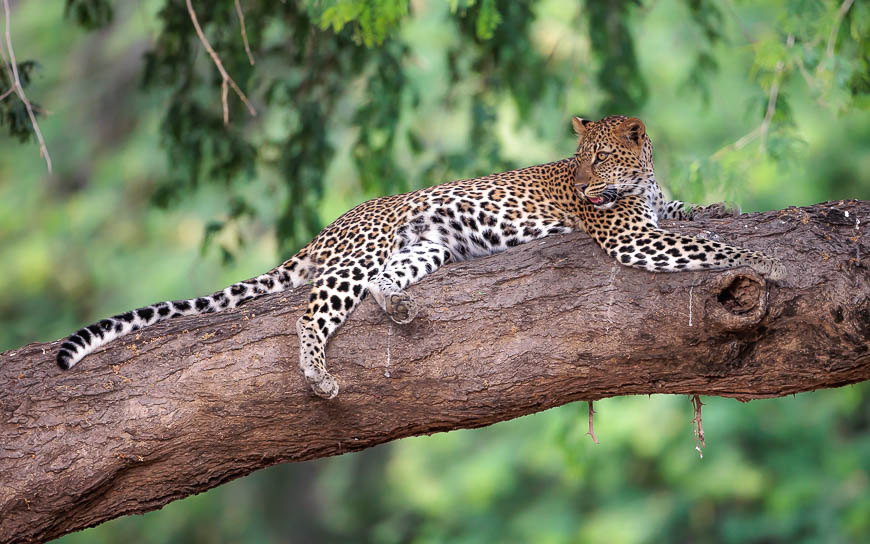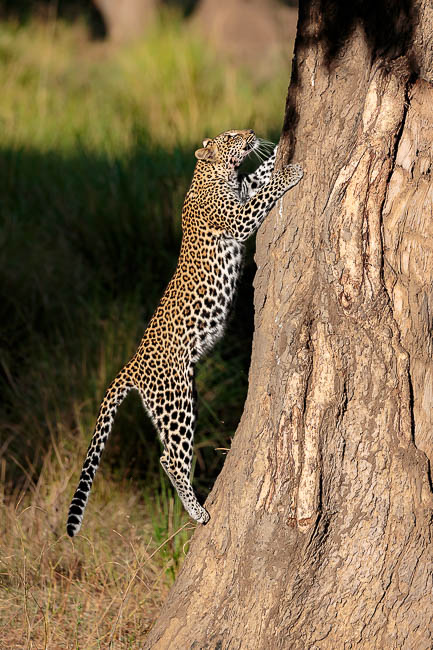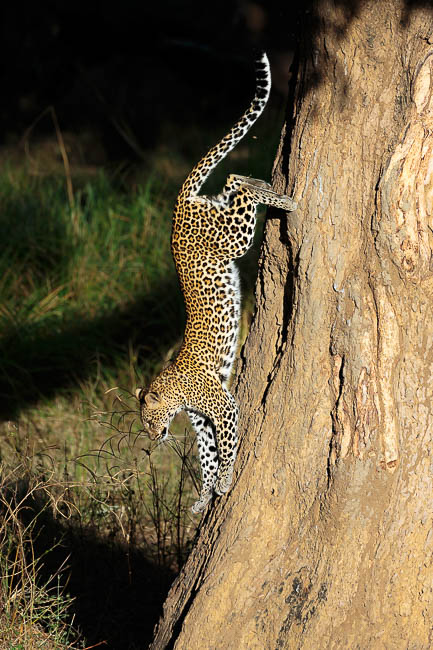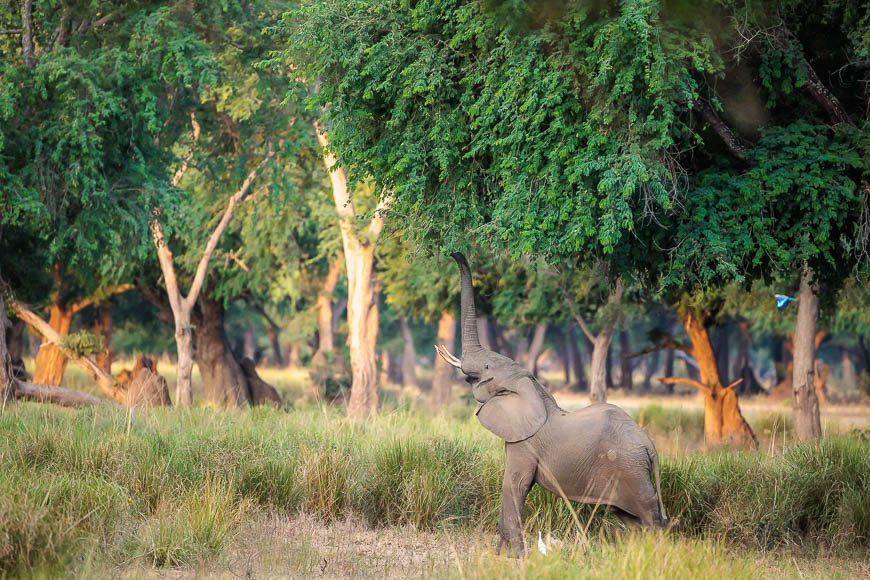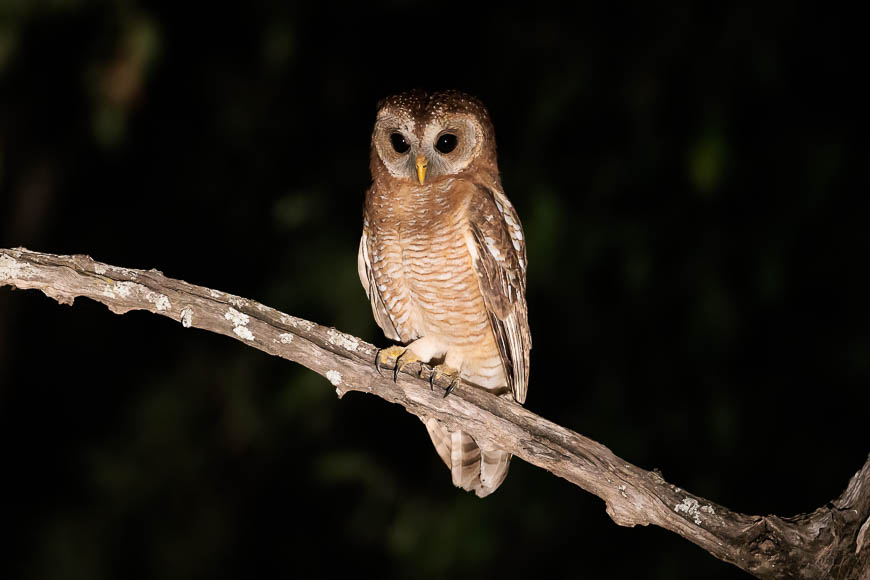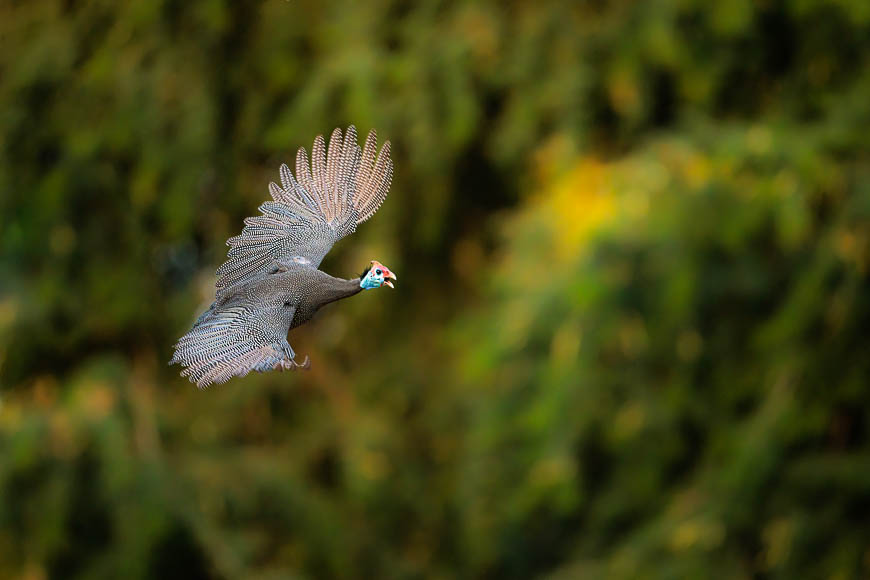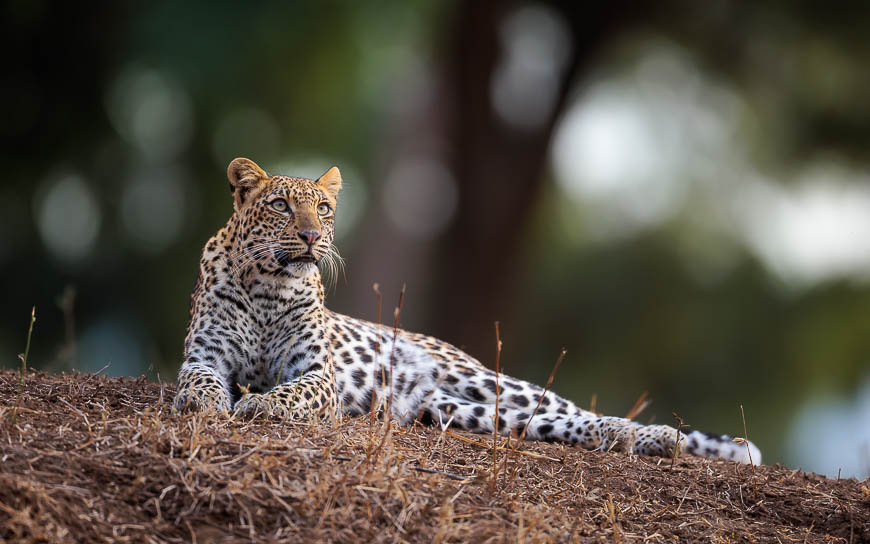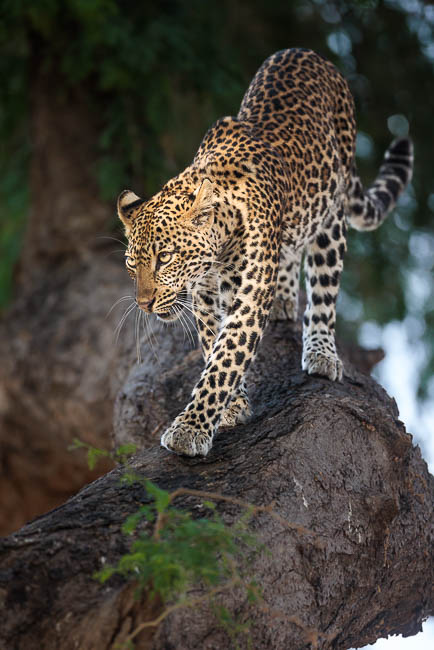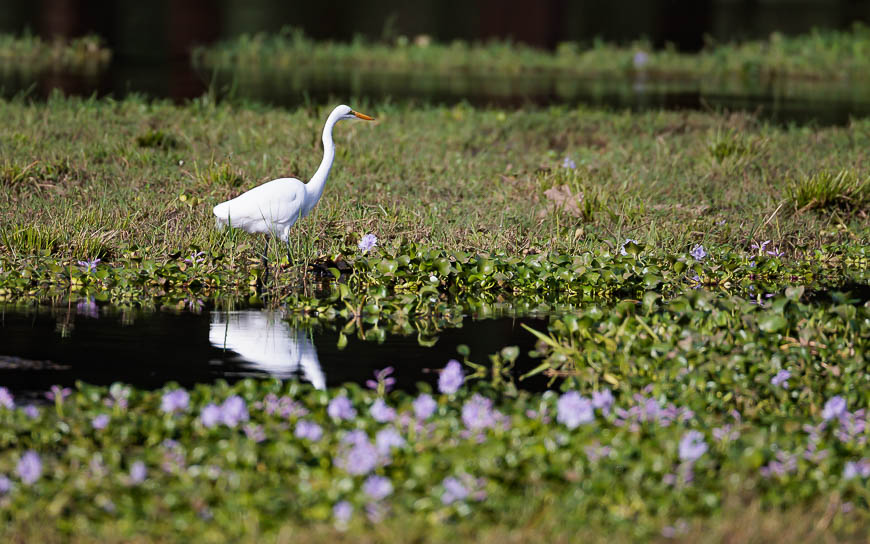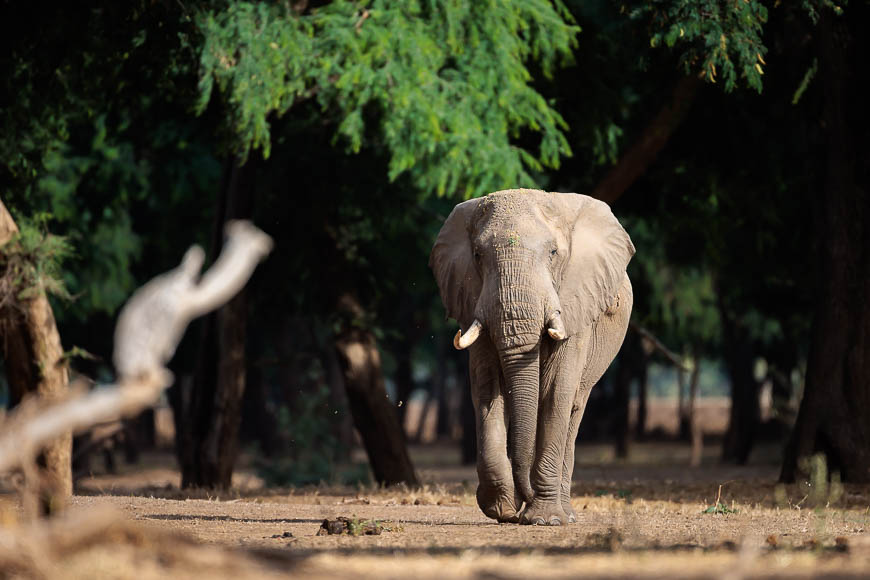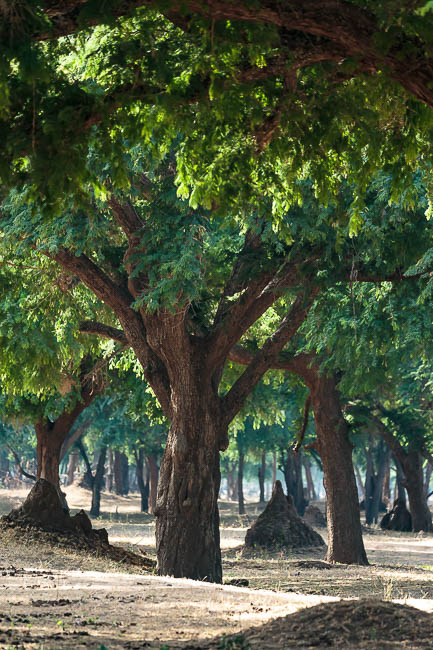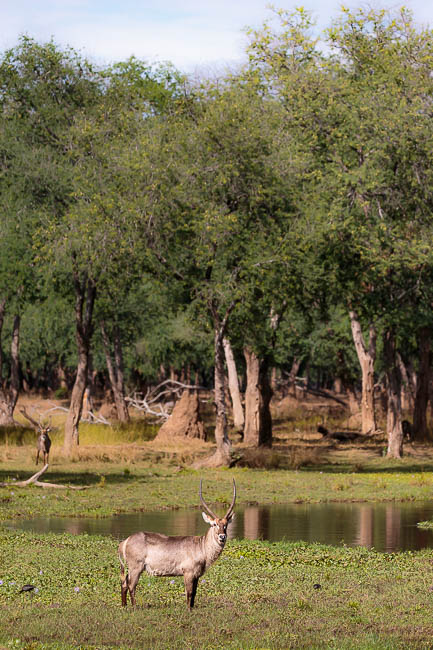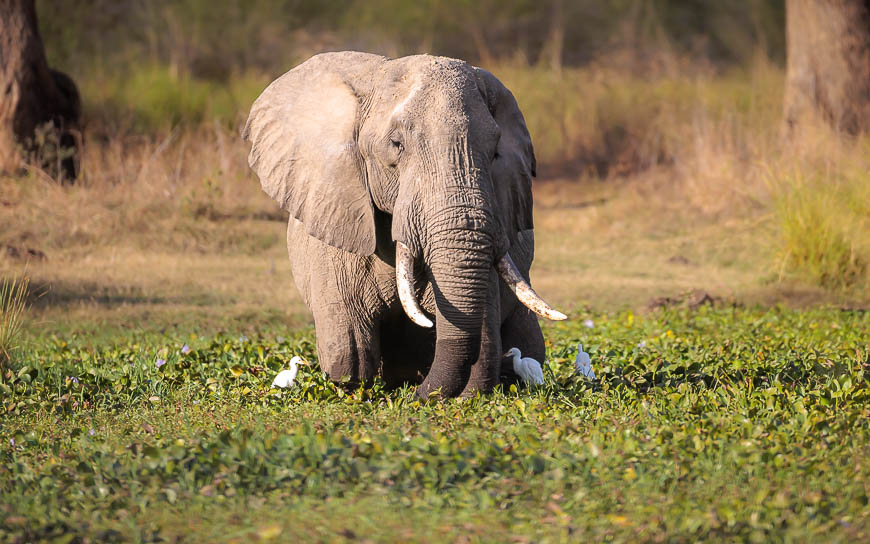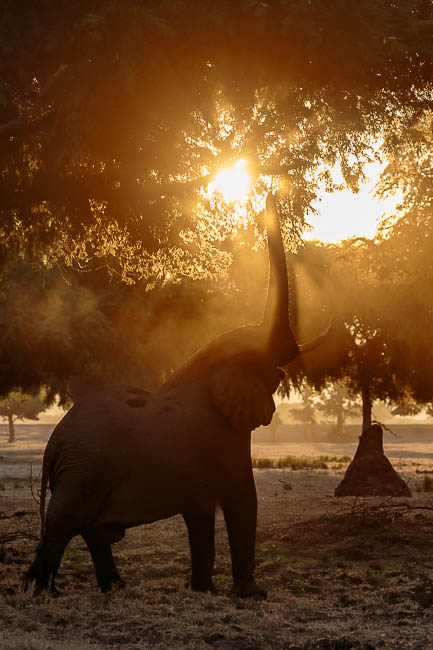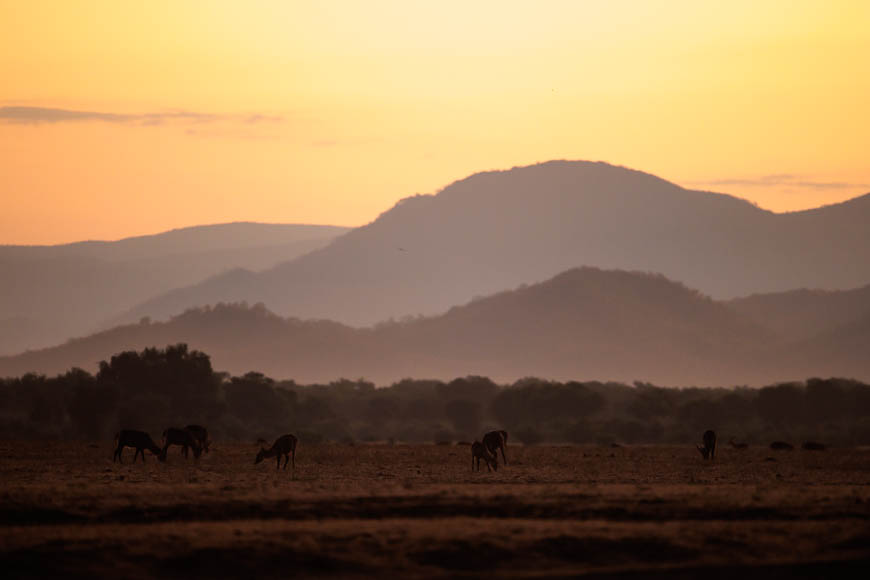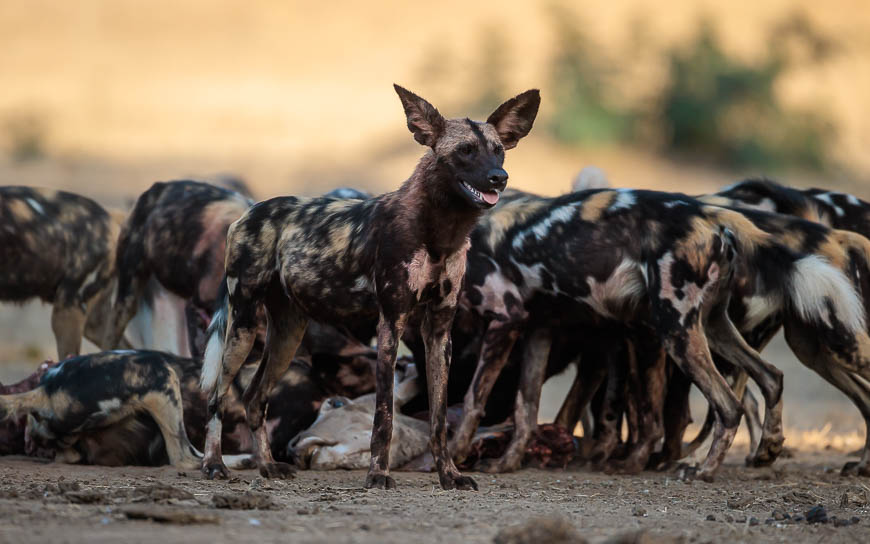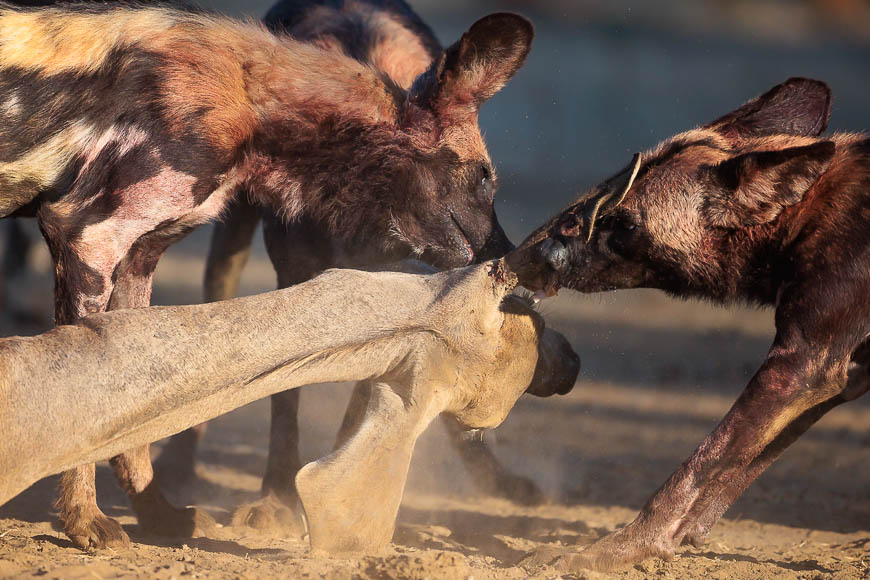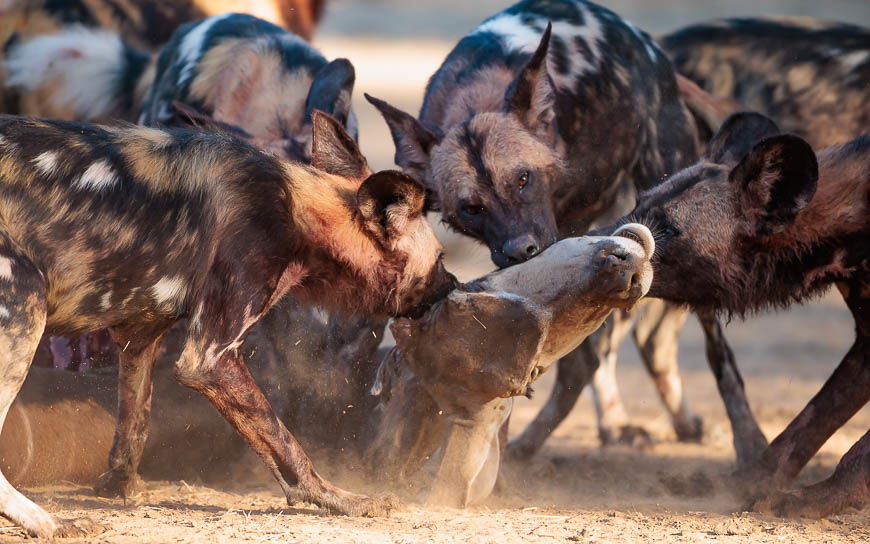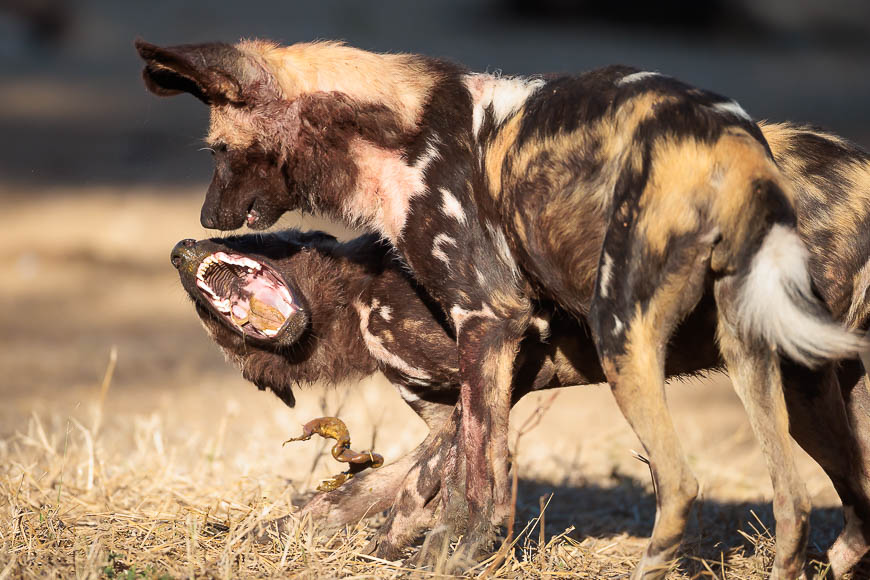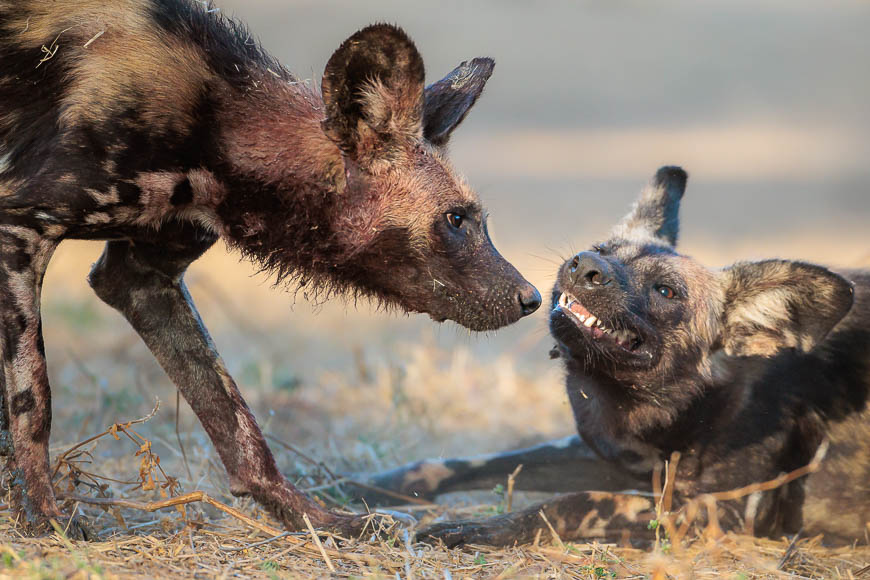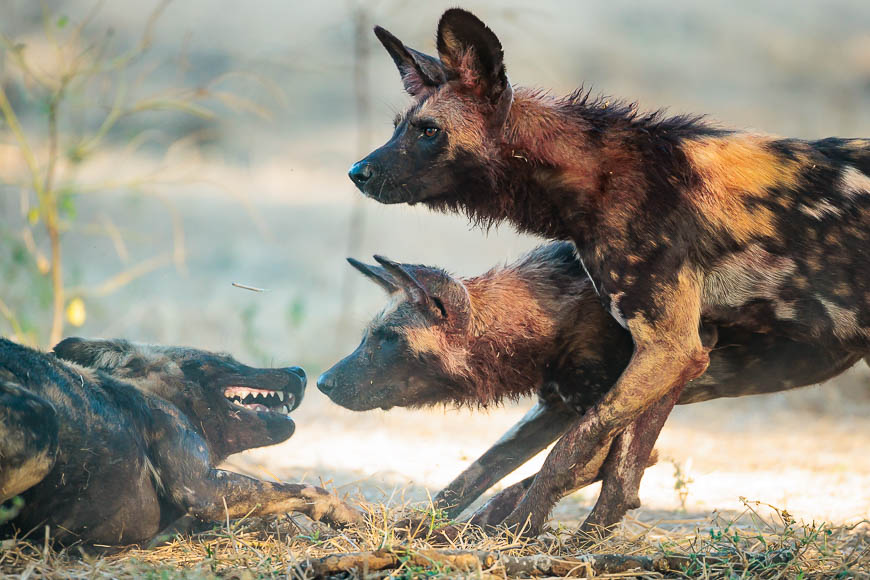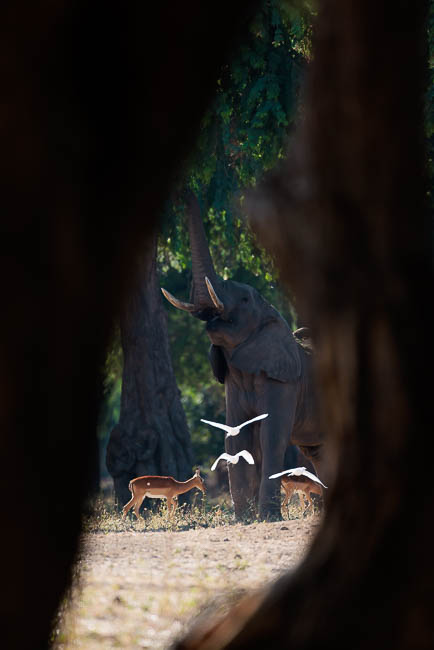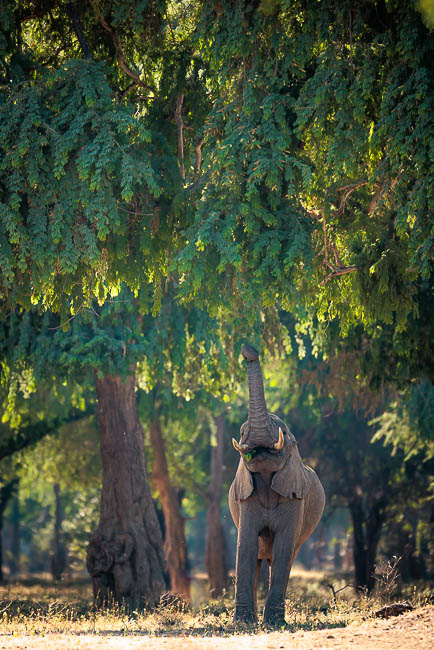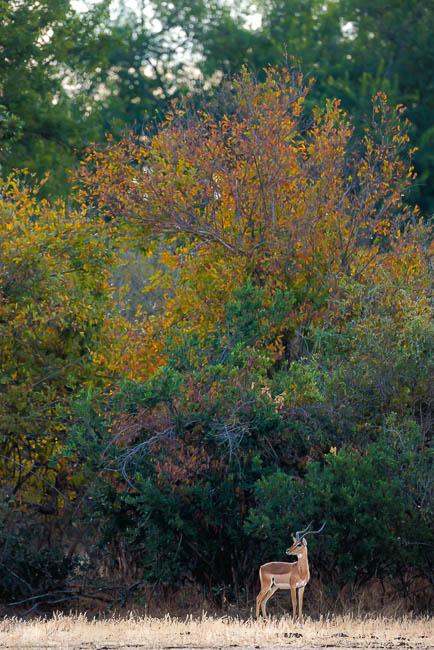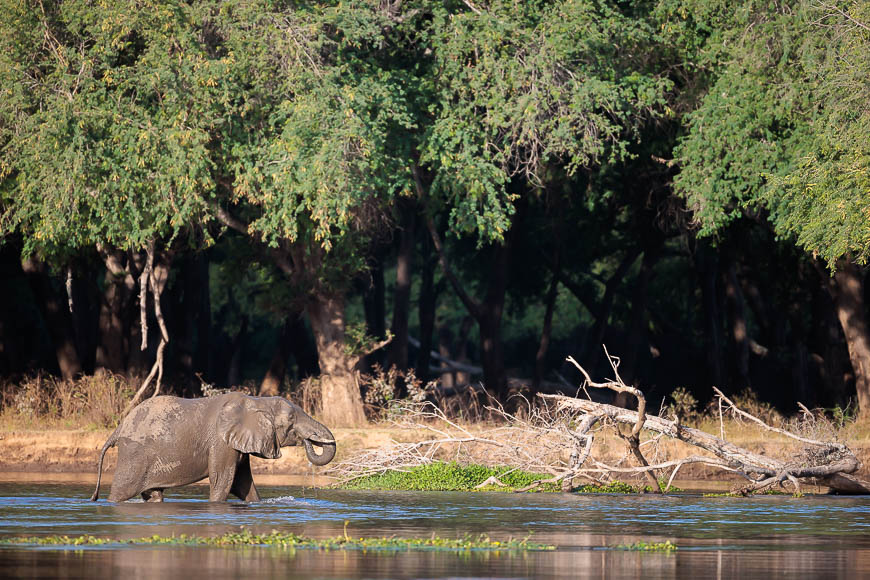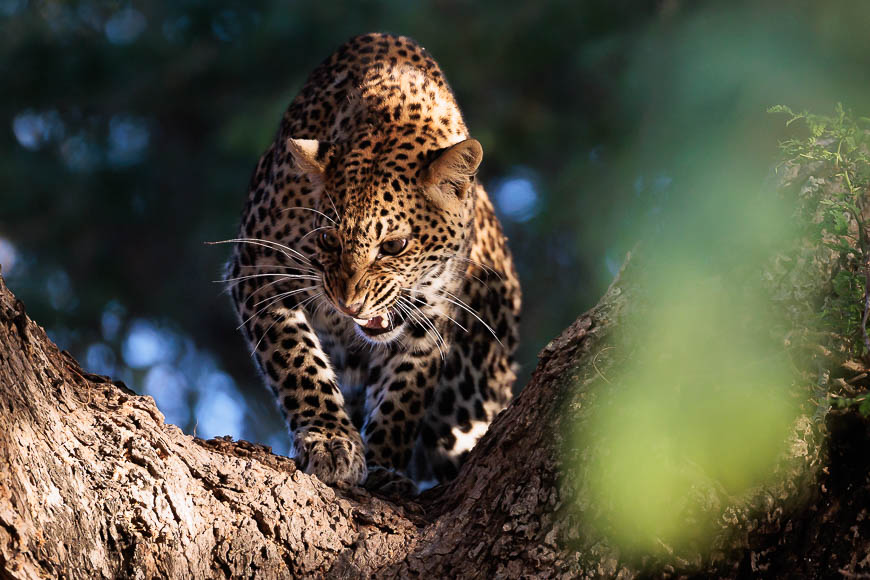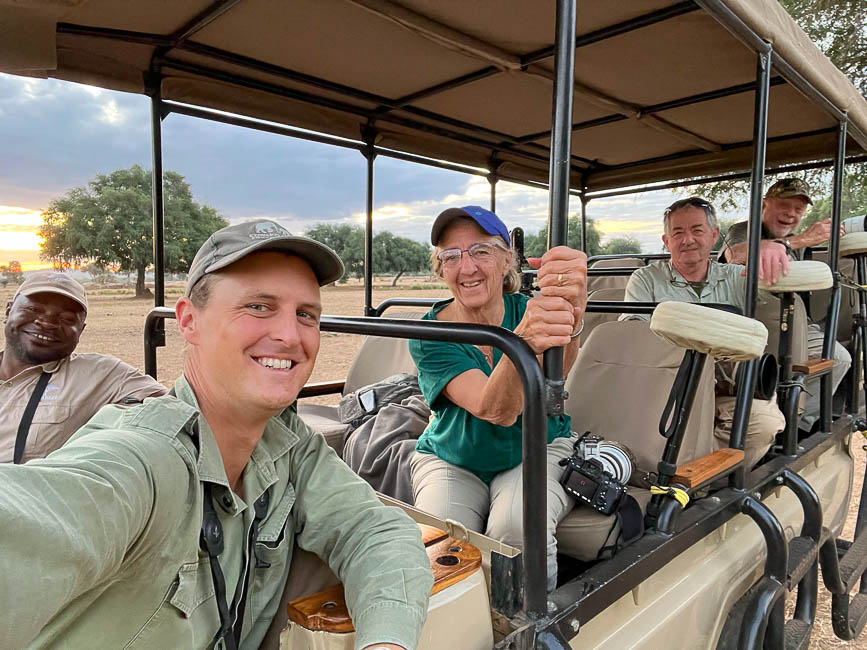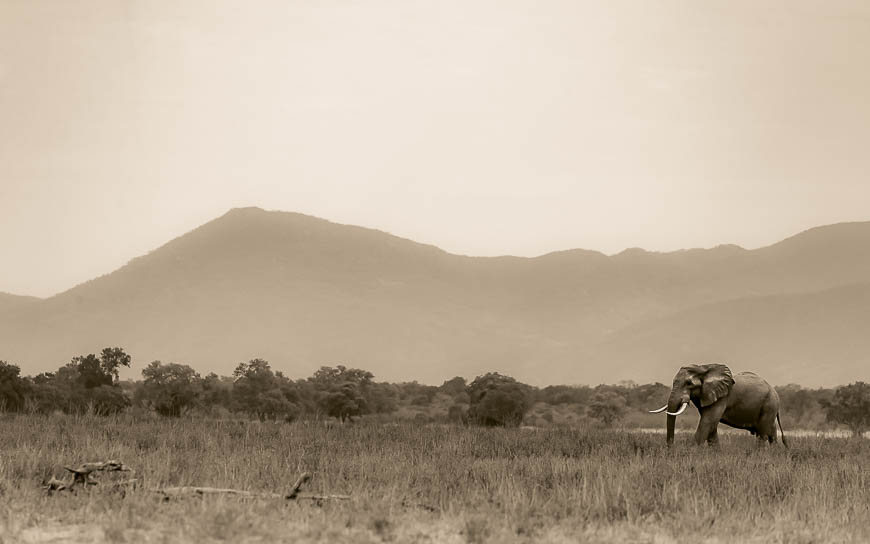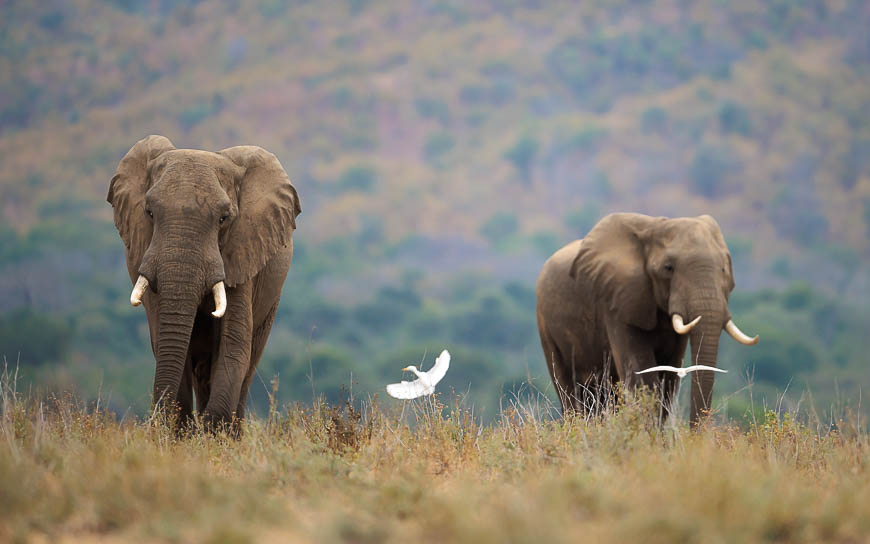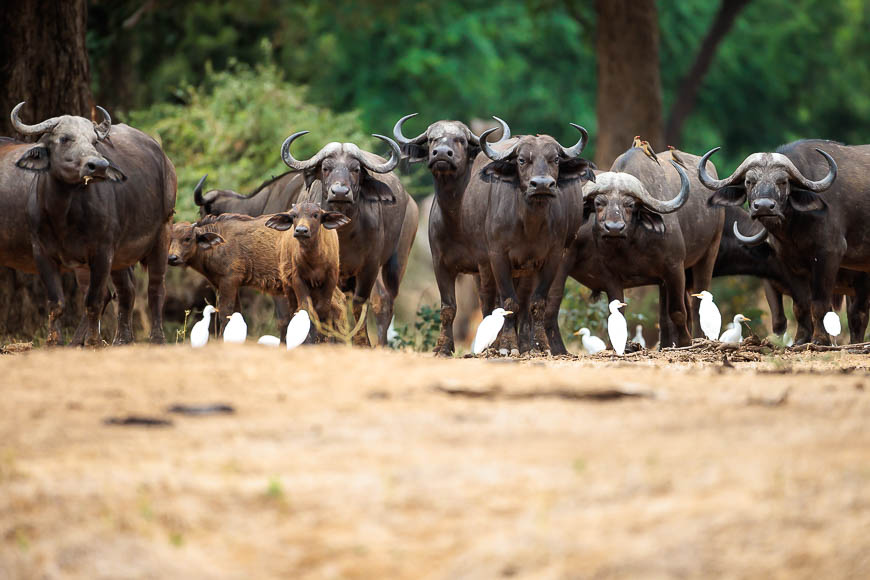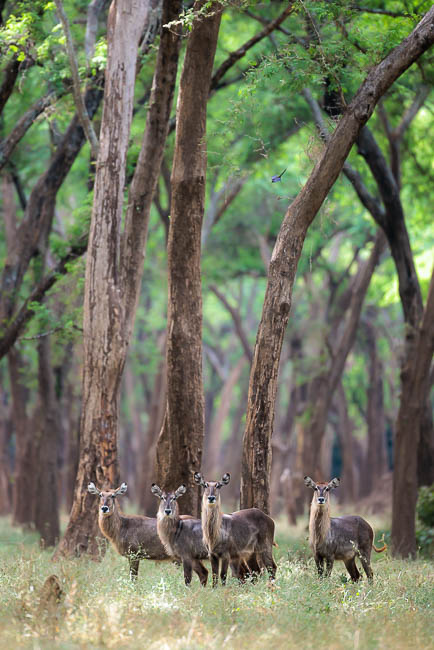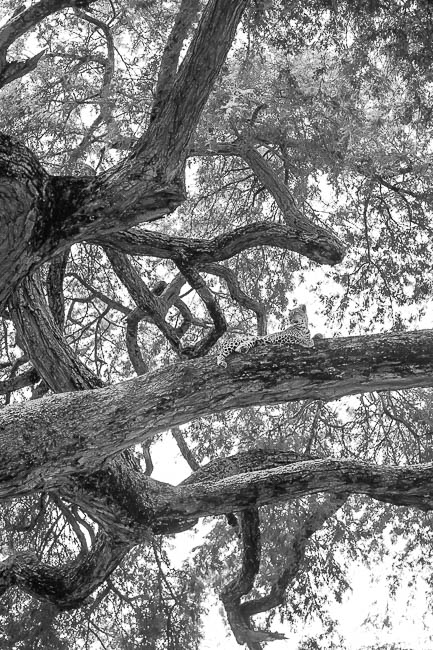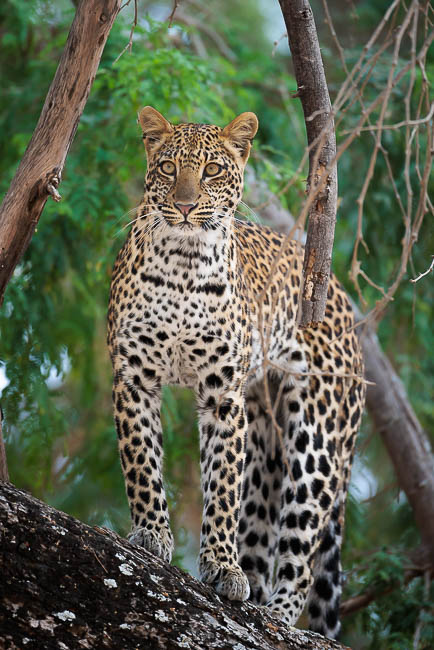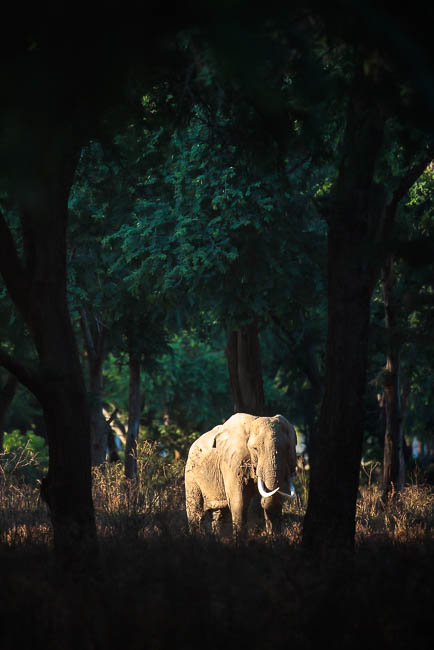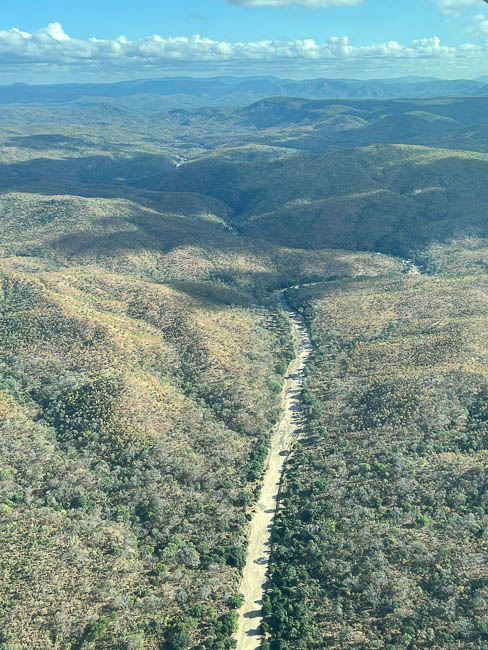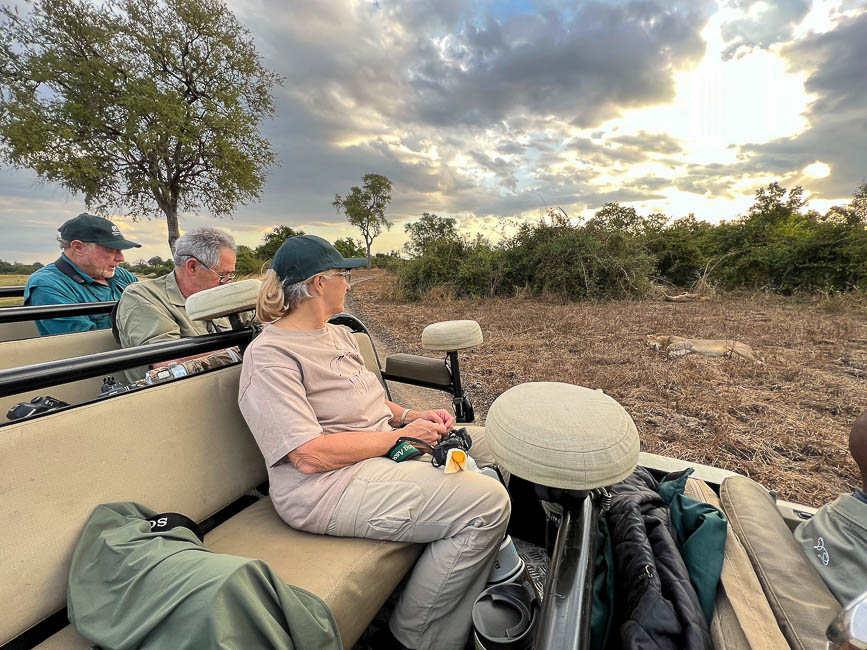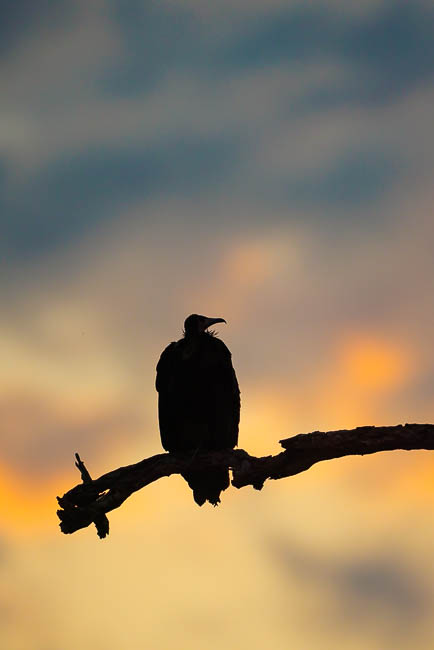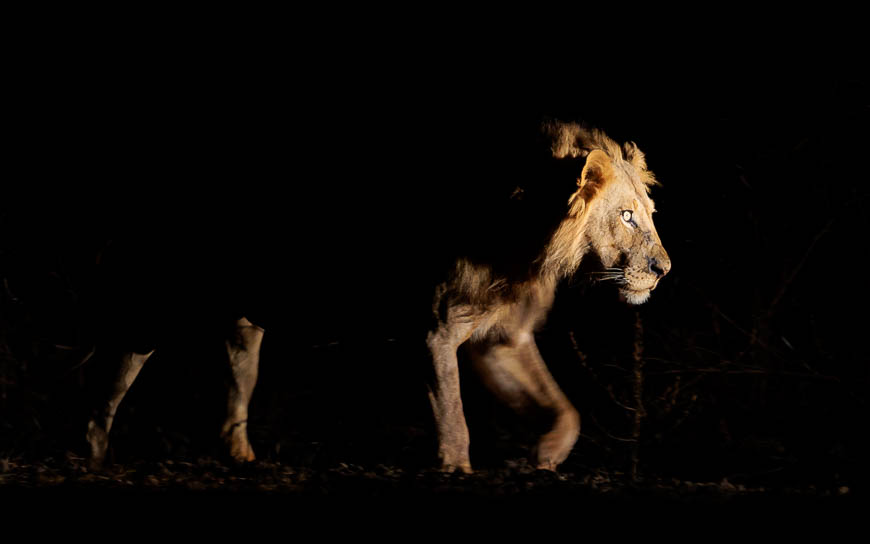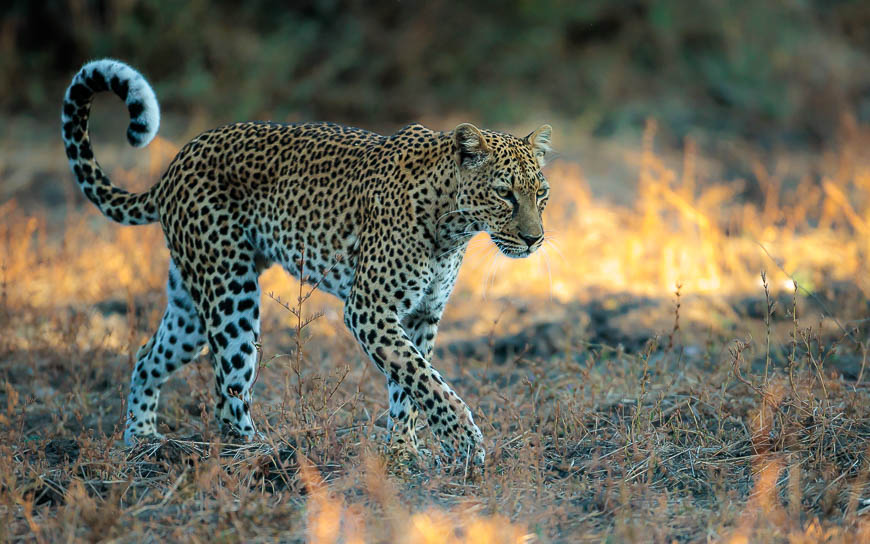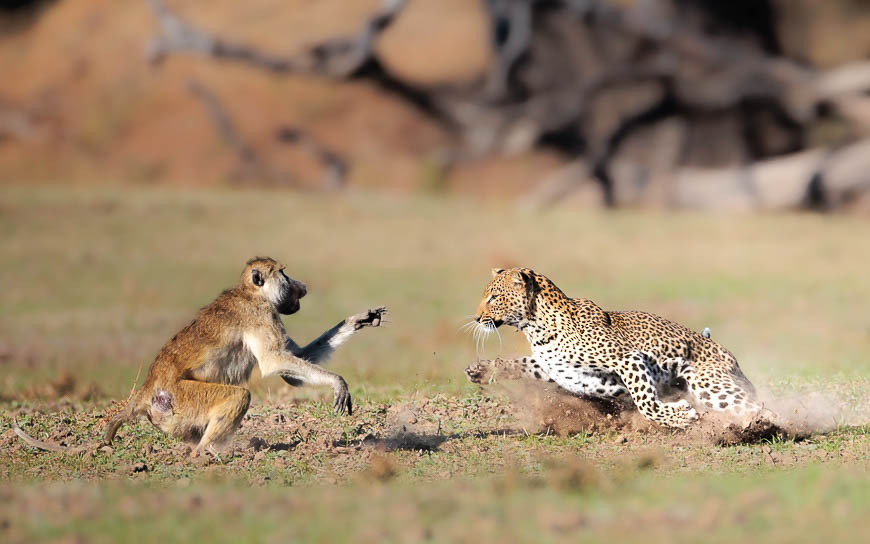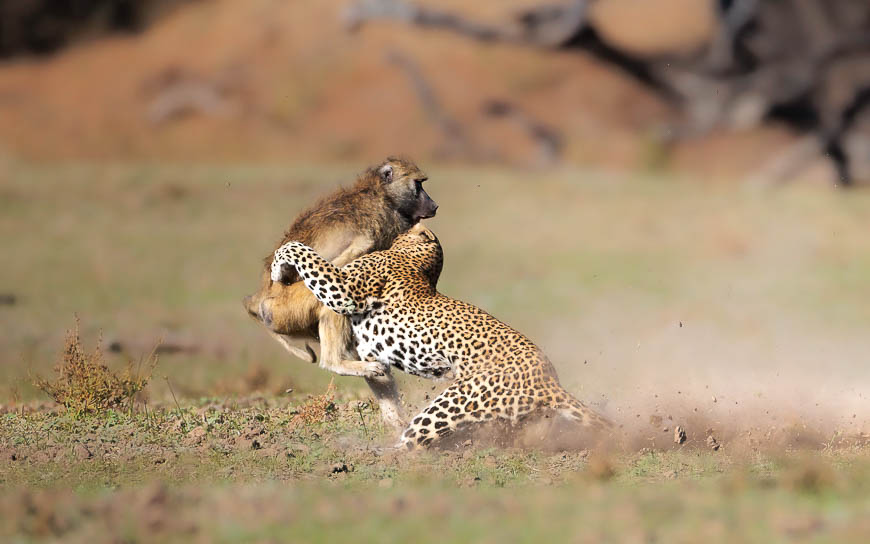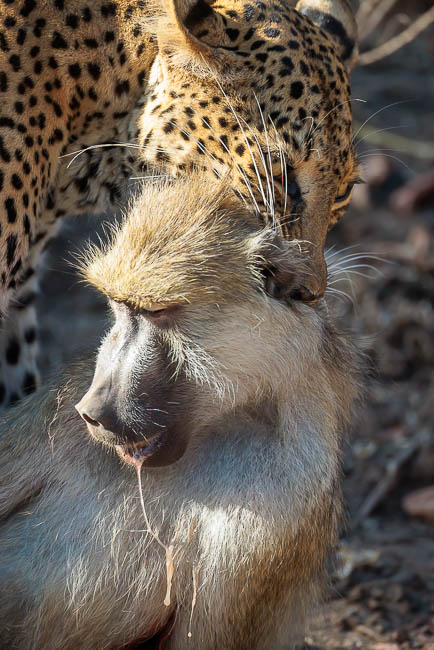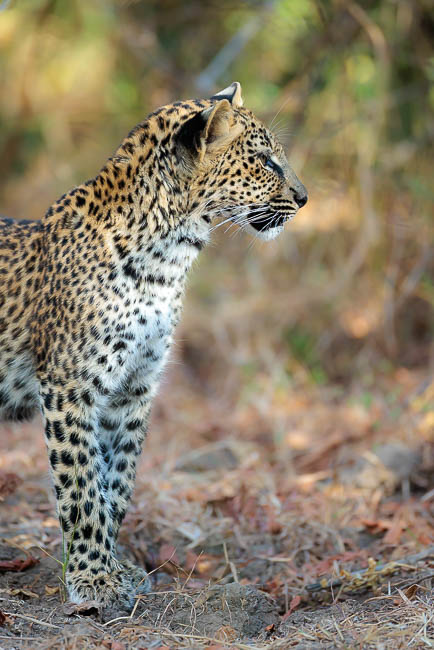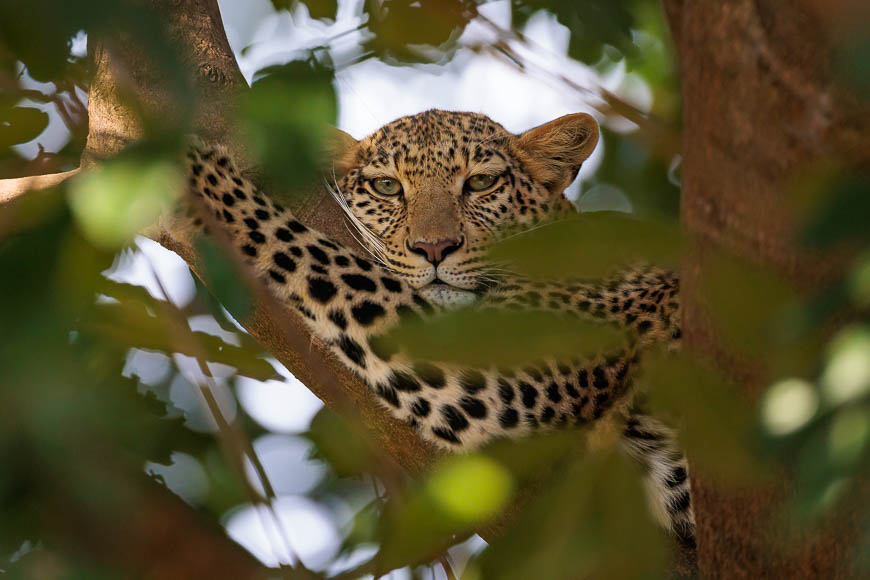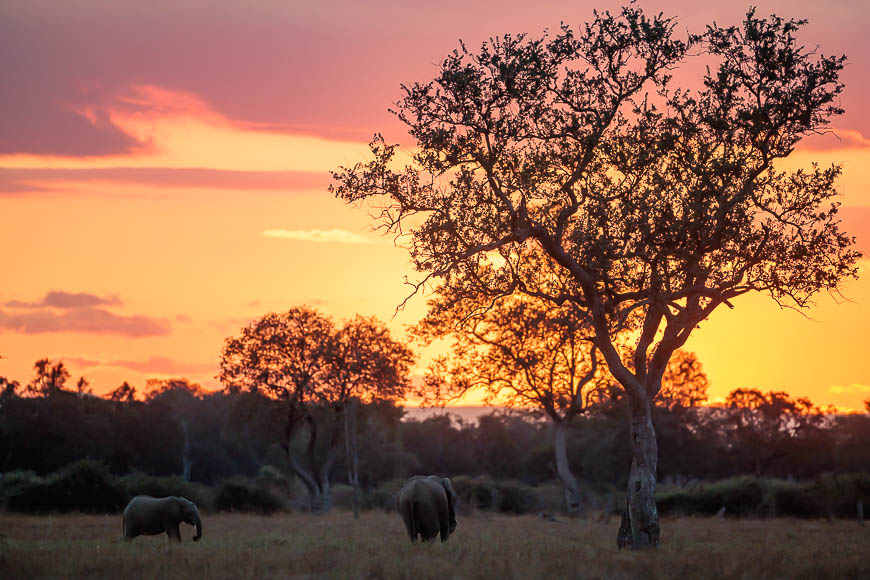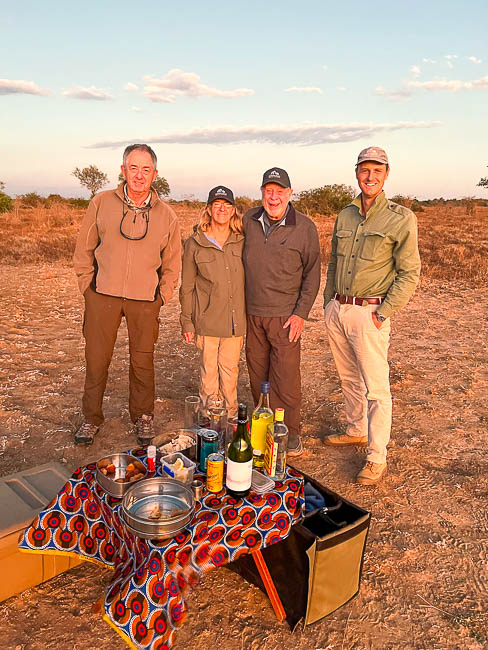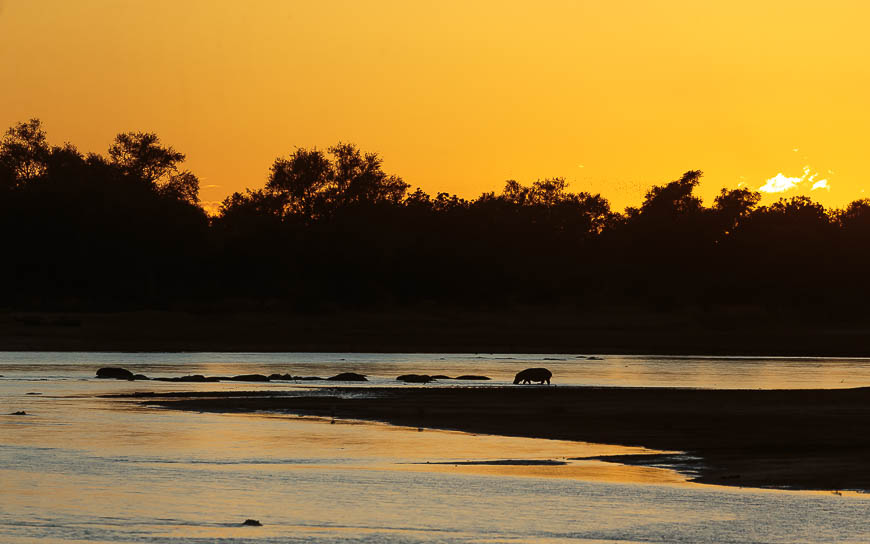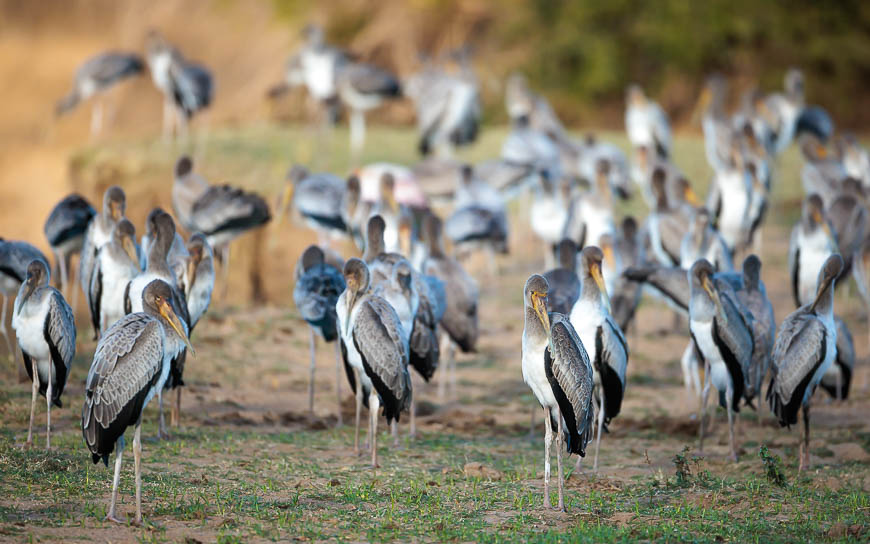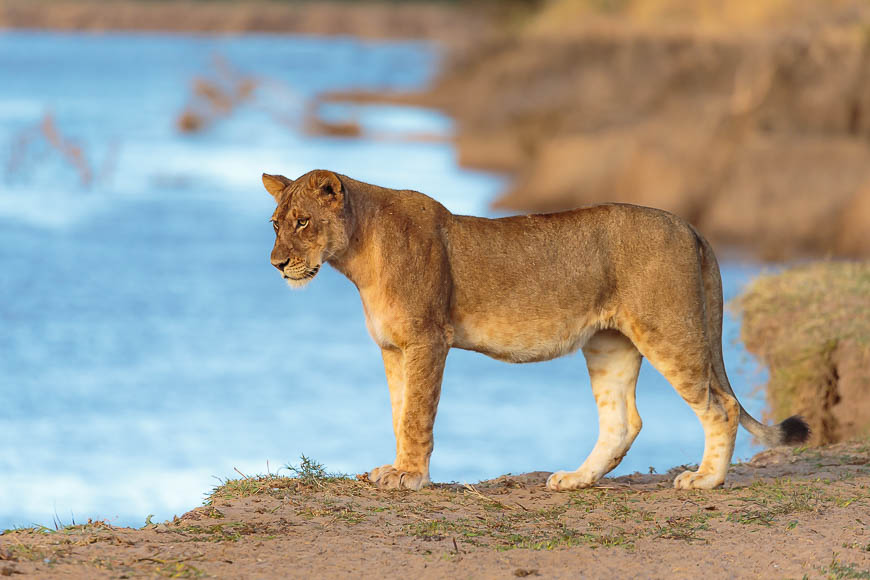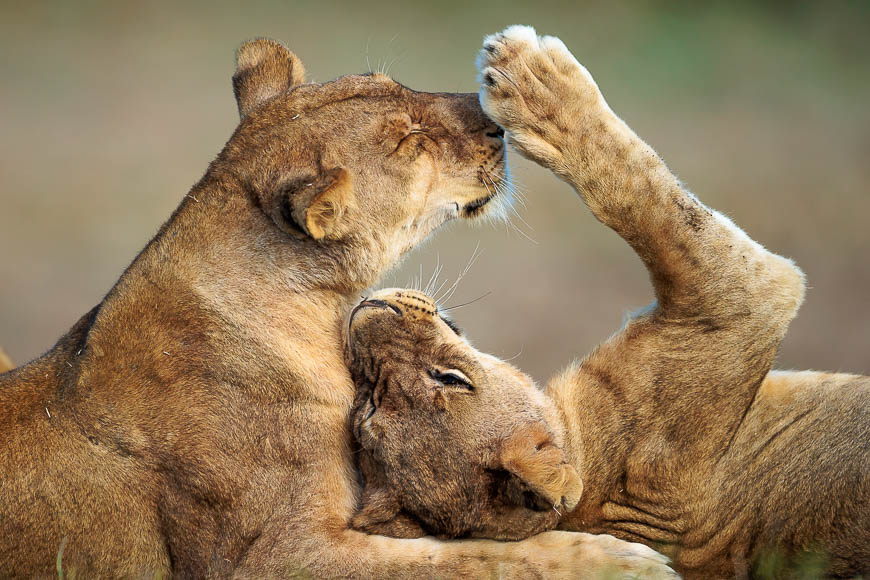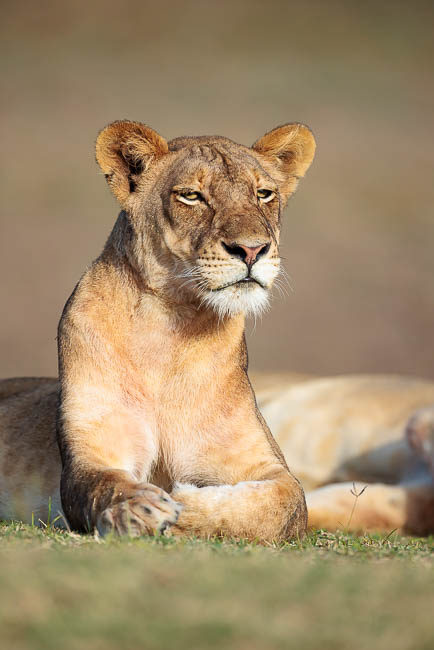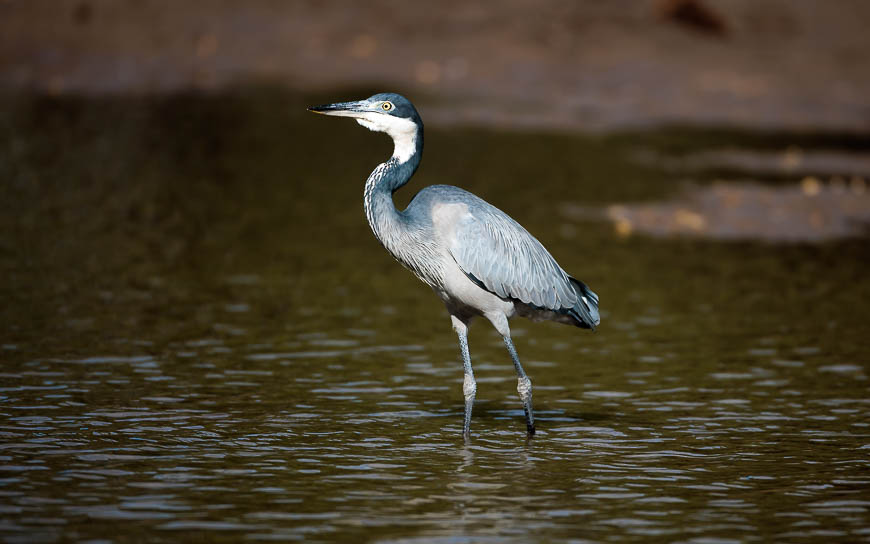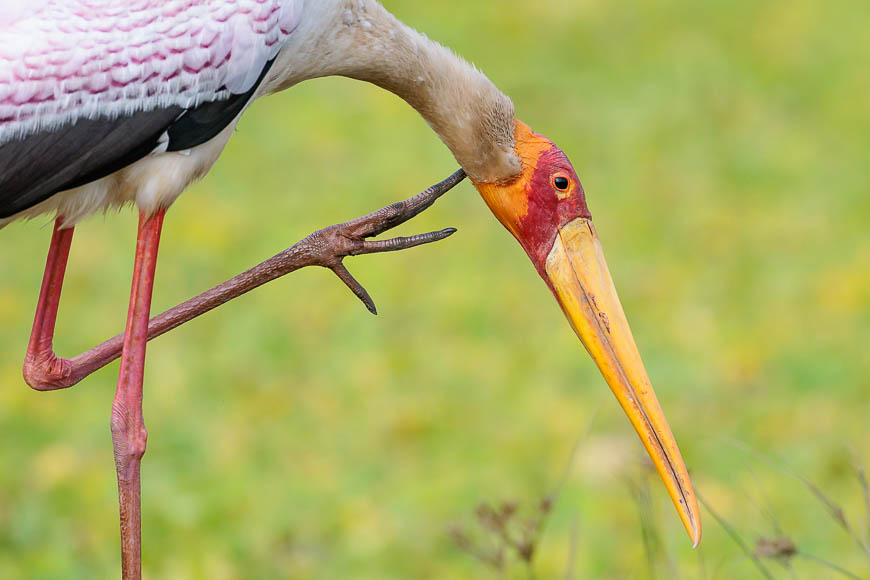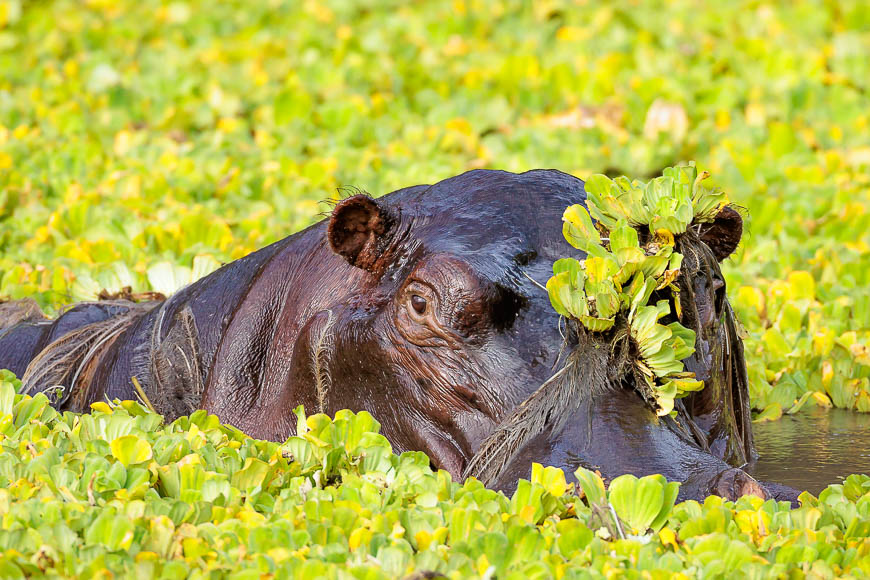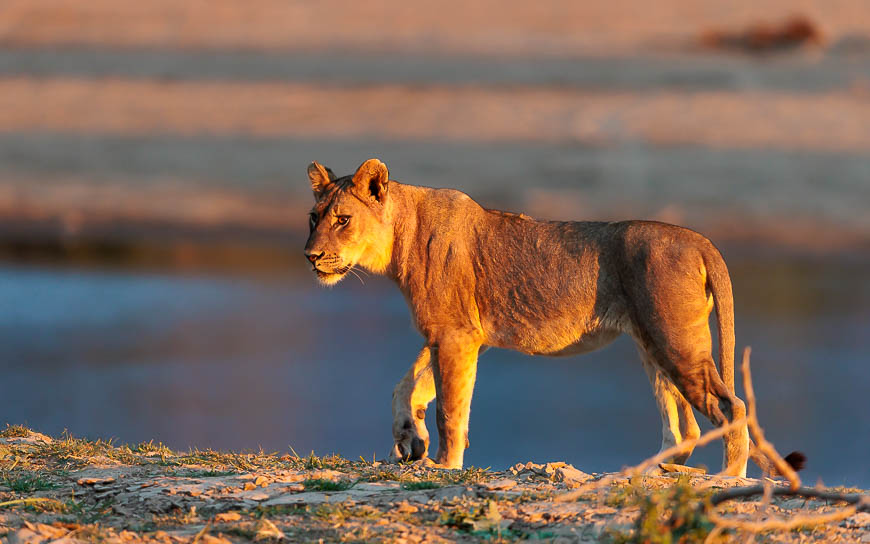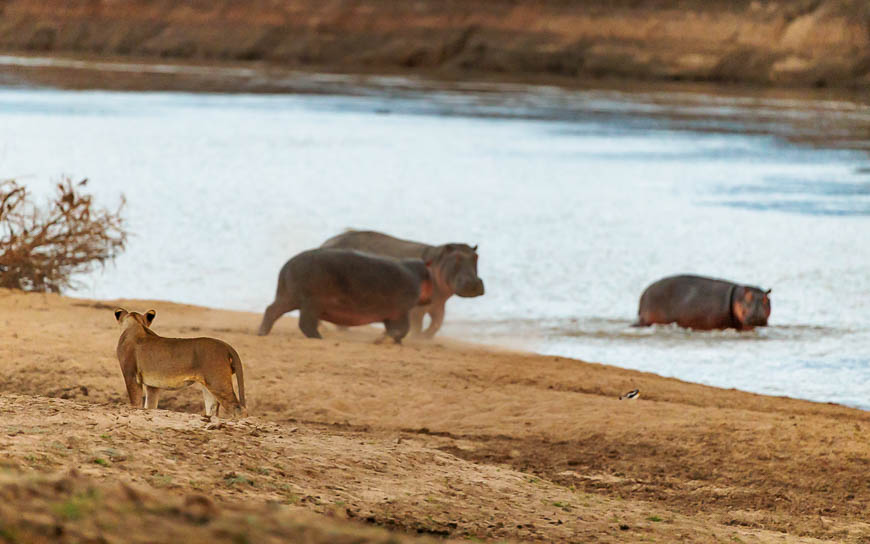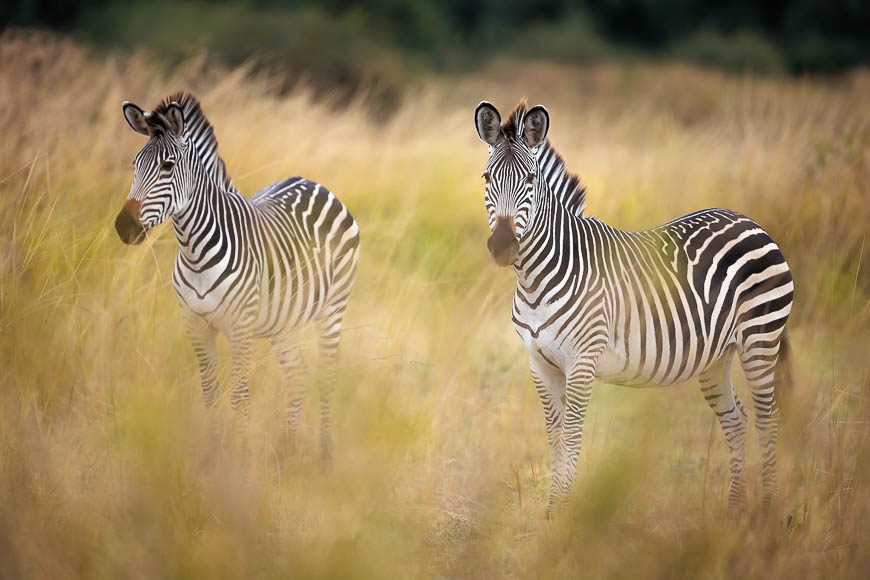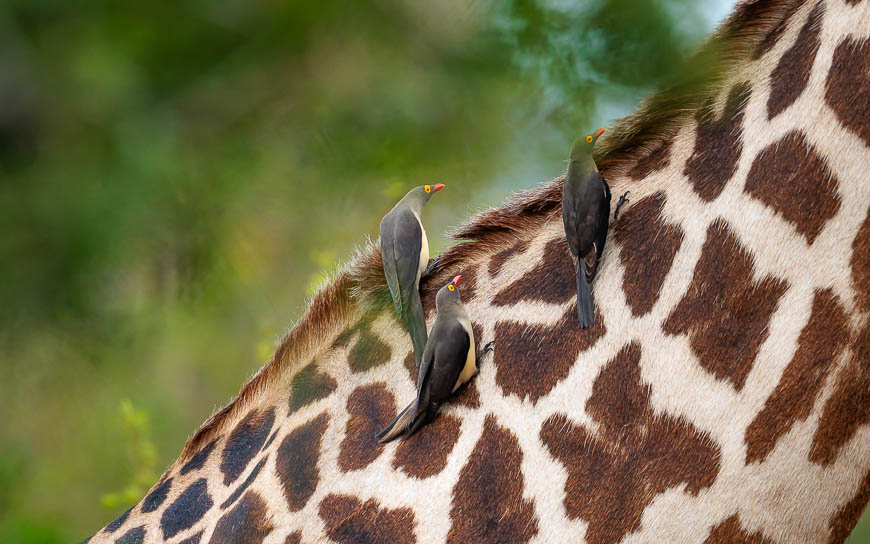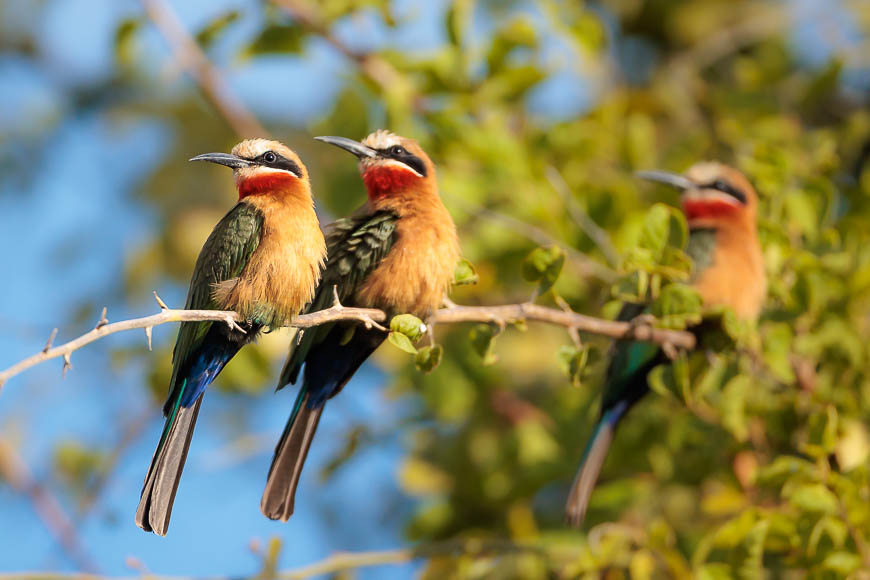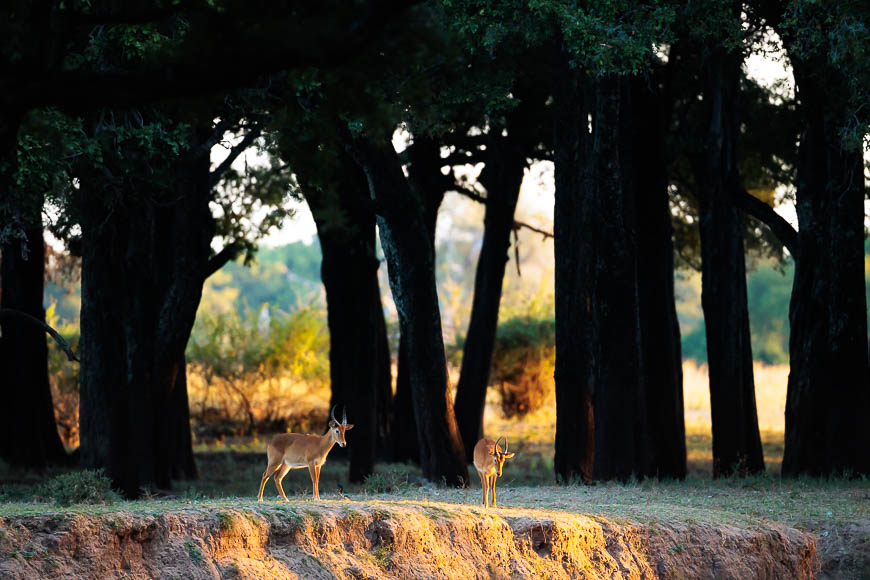Zambia has much to offer visitors at any time of the year. But the dry season months — from May to October — give the most opportunities to access the rich wildlife areas that draw most of the tourism interest in the country. I was therefore very excited to be running a 2-week safari with time in 3 of the best wildlife areas in the country; the Kafue National Park, the Lower Zambezi and the South Luangwa. I carefully selected camps which are located in the most game-rich areas and chose to spend 4 nights in each camp so that we would have time to enjoy whatever that area had in store.
I was joined by 3 experienced photographers who have all travelled widely in Africa, and 2 of them have explored the world on birding tours, building a life-list of over 6,000 species. It’s always a pleasure to guide experienced naturalists, with their stories of the world, but I always quietly hope that I will be able to show Zambia in her best light!
Of course, as with any extended visit to these phenomenal wildlife areas, the game, the sightings and the experience of Zambia was superb. Thank you to the teams at Wilderness Safaris’ Busanga Bush Camp, Anabezi Camp in Lower Zambezi and Lion Camp in South Luangwa for an exceptional time.
I hope you will enjoy reading this annotated report of our adventures in June 2022. I will be returning to the Kafue and Lower Zambezi National Parks in August, and I have space for 2 people to join a trip (at 20% discounted rates) to Kafue in October 2022. Of course, I live in the Luangwa Valley, so I will be back at Lion Camp, and other superb lodges in this area, regularly throughout the season.

Our safari started with 4 nights in the Busanga Plains, the northern-most part of the Kafue National Park. It’s a grassland ecosystem, bounded by trees on all sides and nourished by the Lufupa river running down its centre. It’s defined by the inhabitants: large herds of red lechwe, huge pods of hippos and healthy, thriving lions.
We stayed at Busanga Bush Camp, right in the centre of the Busanga eco-system. It looks out over a huge drying lagoon, where hundreds of lechwe, puku and small flocks of wattled cranes can be seen from your room. In the evenings, the campfire becomes the focal point, and the clear skies at this time of year made for stunning photos.
It’s cold in Busanga at this time of year, with early morning temperatures dropping to 3 or 4 degrees celsius. But these cool, damp mornings sometimes generate thick blankets of fog over the lagoons, creating the conditions for incredible photos.




With so much game around, the lion population is thriving. Several of the lionesses have cubs which were born during the rains and have yet to be reintroduced to the prides. We found one lioness with her sister and her three cubs early one morning. They had been feeding on a red lechwe carcass from the night before, but had just finished the last scraps.
Aware of the cubs’ vulnerability in the open grassland, the female took the cubs off, across a flooded channel, to the nearest thickets where we lost sight of them.

Back in camp for lunch.
Each morning, we set out very early, when it was still dark and cold to get to a different area to photograph the pre-sunrise colours.
Buffalos were the subject today…..
…with attendant cattle egrets.
The remaining water channels are drying up fast but, with the help of a swamp boat, it’s possible to move among the hippos, waterbirds and lechwe as they feed along the edge. Occasional skirmishes break out between the incumbent males over rights to the drying puddles.
Particularly in the cooler months, the lions do not need to take shelter in the shade during the day. They often settle in the grass wherever they please. This leaves an almost limitless area in which to search for them! Sometimes, they are hidden away waiting for unsuspecting antelope to wander past.
The morning tea breaks were a welcome chance to warm up after the very cold mornings!


It was still early in the season and, while the area was much drier than normal, we still found that the game was dispersed and the lions were sometimes harder to find. However, we quickly decided that, rather than using the valuable light to search for lions that might not be found, we should focus our attention on the facets of the Busanga area which were special at that time…namely the superb light and the misty mornings.
Late one morning, we had a lovely surprise when we found a half-eaten lechwe carcass lying against a mound. There was no sign of a predator so we started to hunt around and found a cheetah resting nearby. She had fed well already and did not want the attention that the approaching vultures would bring so she moved off pretty fast.

Busanga is an important landscape for several waterbird species, including two species of cranes; the wattled and the grey crowned. The latter form large flocks in the dry season, flushing insects with their long legs. Occasionally, a pair will reaffirm their bond with a short courtship ritual.

There are few places better to photograph roan antelope than on the plains of Busanga. This herd is very relaxed and allows photographers to get out, lie on the ground and discuss the best angles for photos.

We spent a very memorable afternoon with the hippos in the last lagoon which is large enough to boat through. Initially, we put the light behind us, shooting with the pink glow on the hippos…
….catching wide yawns…..
…and steely close ups.
As the sun dropped low in the sky, we boated round behind the hippos, shooting into the setting sun. Stunning scenes.

Perhaps my only portrait photo of a crane family where all are co-operating!
We had loved our 4 days in Busanga, especially the misty mornings, the interactions with the lions and their cubs and the close-up experience with the hippos, but it was time to move on to Anabezi Lodge in the Lower Zambezi National Park.
Our first afternoon was somewhat cloudy, and this persisted off and on all week. But the main aim of a photo safari (as I see it) is to make beautiful images out of ordinary situations. So we spent time with these buffalo, enjoying their surroundings and talking about the options available with the use of the dead tree as a setting.

Cloudy overcast days are great for getting nice detail on light or dark subjects.
Moving on, we spent the first of many extended periods with a family of 3 leopards which live very close to Anabezi Lodge. The female brought up her two cubs in the area and the guides have got to know them very well. Our guide, John, knew that they had killed an impala in the morning so we would have a good chance of finding them again in the afternoon.
No one will pass up the opportunity to shoot an image such as this…! However, as I discussed with my guests in the intro briefing at the start of the safari, it is images of action, behaviour, incredible light and unusual species which make the most impact.
With this in mind, we passed up the opportunity to shoot more images in the tree, and positioned ourselves perfectly to capture any one of the leopards moving up or down the main trunk of the tree. We considered the background (see how the dark shady grass behind makes the leopard stand out?) and the angle of the light, and the likely angle that the leopards would use to ascend the tree. It all worked out and we got some cracking images!
One of my mantras in photo safaris is “giving up the current opportunity in order to get in to position for a much better future shot”.
While we were watching the leopard family, elephants were approaching in the distance. Normally, we’d have been very happy to enjoy such a fabulous sighting, but we didn’t know whether we would see the leopard family again…. We needn’t have worried!
An African Wood Owl on our way back to camp.
As we left the leopard sightings, we could see that the impala carcass was a male and there was a lot remaining. They had stashed it in the long grass (very few hyaenas in Lower Zambezi) and we suspected that they would take it into a tree overnight. On arrival in the morning, a flurry of guinea-fowl told us that the family were still around.
We were then treated to several hours of superb viewing; the leopards climbed, descended, posed, played and moved around.
They are using a large winterthorn tree which was ideal for us as the fine needle-like leaves provided soft shade and allowed some light though in places.
Shooting on Canon’s R5 at 20fps, I shot more images that I care to admit(!), and eventually the trio settled down and we moved on to look for other things.
A lovely bull elephant gave us the chance for low-angle shots….
…and the soft dry-season light allowed us to discuss how to compose “landscape” shots in the forests in readiness for when we might have the chance to create “animalscapes”.
The Lower Zambezi is a very different ecosystem from the Luangwa, despite being part of the same river basin. This is because the Zambezi is dammed in several places, leading to a more consistent flow throughout the year. While the lack of massive seasonal change certainly impacts some species, the habitats that are created are stunning and support lots of life.

Backlit dust at sunset….!
I always encourage my guests to push their own limits and the limits of their equipment. It was almost dark when we lined up this shot, but I could see the stunning scene and the small waterbuck antelope which provided the focal point for the image. We had to focus carefully and rest the cameras to obtain the shot, but it’s a striking result.
We decided to travel west to the Jeki plains the following morning in search of the large wild dog pack which has been giving amazing viewing over the last 2 years.
We spent around 90 minutes looking for them and, when we’d almost given up and decided to look elsewhere, I spotted a kudu running across the Jeki plains, around 2km from where we were. I lifted my binoculars and was just able to make out the whole pack pursuing the antelope over the edge of the bluff.
It took us perhaps 8-10 minutes to get to the area where the dogs were and, in that time, they had caught the kudu and started to feed. We arrived to find 26 dogs around the kudu.
Most wild dog packs raise just one litter each year, born to the alpha pair. This dog pack had two litters in 2021, a second litter being born to a beta female. This is quite unusual and led to a pack of over 40 dogs at the end of last season.
I have never seen a pack with two litters of yearlings before but the different dynamics between the dogs was immediately visible to me, compared with the other dog packs that I have spent hours watching.
The socialisation was far more aggressive than I have previously seen, and the pack appeared to have some divisions; a portion of the dogs would feed, and the others stood watching. Then it would reverse after a short scuffle between the dogs.It was fascinating to watch and, had there been fewer dogs, it might have been possible to start working out and identify the two groups of yearlings and their own dominance hierarchies.


We finally had our chance to make animalscape images with this stunning bull elephant and the backlit trees.

We set off in a different direction in the afternoon, finding lots of elephants along the web of channels parallel to the Zambezi River.
We were alerted to more action by some unusual baboon behaviour. They were surrounding a large tree in which was one of the two leopard youngsters which we had been watching earlier in the trip.
The leopard’s aggressive facial expression, intended to remind the baboons not to come too close, was in stark contrast to ours as we watched such an interesting interaction. The relationship between leopards and baboons is complex, with dominance changing between night and day, and depending on the number of baboons involved and the habitat.
We had one more day in the Lower Zambezi, so we decided to explore new areas. We were treated to a great sighting of bull elephants crossing the Jeki plains….

…and buffalos in the forest at coffee break time.
The clouds rolled in again, softening the light so we spent time in the winterthorn forest with any subjects we could find. 
Returning to camp late in the morning, we once again found one of the leopards resting in a tall tree. The light was high and harsh so we worked on high-key images.
Later in the afternoon, we returned to find all three together. The mother set off hunting and we watched for around an hour while she constructed a hunt across the broken ground of the Zambezi Valley. It was not a photo opportunity, but simply wonderful to watch and take time to observe the skill and judgement of a leopard in her pursuit of prey.
On our last morning, we had to get to the airstrip early for our flight to South Luangwa. We had time along the way to shoot the shafts of light piercing into the forests….
…before we caught our small plane from Jeki airstrip to Mfuwe Airport in the Luangwa Valley for our journey to Lion Camp.
We had not seen lions in the Lower Zambezi so we were happy to find the local males on our first afternoon at Lion Camp….though they were pretty sleepy! We waited around, hoping that they would come and drink at a small waterhole just below where they were resting. We imagined reflections and nice sidelight…..
….but in the end it was only the vultures which gave us any photo opportunities before dark!
Eventually the lions roused and started to move around but they didn’t fancy a drink apparently! Such is wildlife sometimes.The following day turned out to be a very exciting one, not least because it was one of my guests’ 80th birthday! We set out early as always and soon picked up alarm calls that led us to Chiphadzuwa, a well-known female leopard from that area. She has two cubs and she seemed to be heading towards the area where I had heard they had been seen the night before. However, it soon became apparent that she was passing that area and heading towards one of her favourite hunting areas, a drainage channel at the western end of fish-eagle lagoon which she uses for cover to approach prey.

Predicting what might happen, I drove us on a long route around to get ahead of her and positioned the vehicle to give us a view along the channel, but not too close to it. It’s important not to drive to the edge or one risks spooking potential prey. As I pulled up, I could see a lone baboon sitting perilously close to the edge of the gulley. What it was doing there is hard to understand…and it was clear that the leopard had seen it on her approach and was targeting it! She moved along the bottom of the gulley, scenting as she went. She couldn’t see the baboon but caught its smell, backed up and then positioned herself close to the rim, right underneath the baboon.
As she was approaching, I advised my guests what I thought would happen, including camera settings and told them to focus their cameras on the baboon. When a leopard attacks, they move too quickly for us to keep them in the frame, so it’s better to focus on the target and get shots of the leopard entering the frame and catching the prey.
We didn’t have long, and then she ambushed the baboon. Shooting on high frame rate, I have over 250 shots of the action. Below are a couple of the best ones!


She caught the baboon, dispatched it with a bite to the back of the neck and started to carry it back through the gulley towards the thickets where she could hide it from view. At this stage, the biggest risk to her is losing the prize to scavengers attracted to the area by the alarm calls from antelope nearby.

She took it deep into the thickets where we couldn’t see much. She fed rapidly, making sure to sustain herself. If scavengers come to steal the kill later, at least she will have obtained some energy to start a new hunt. We left her to feed, knowing that we had seen, by far, the best part of the action. When we returned later in the morning, she was not there, but the baboon carcass was still on the ground under a thicket. She had clearly gone to get her cubs. We thought about staying for their arrival, but the animals’ welfare is more important than our photos and we wanted to make sure that the 3 of them had a chance to feed without the risk that our presence would attract (or direct) the attention of scavengers. We planned to return in the afternoon when they would all have had a chance to feed.

In the afternoon, we found the 3 of them resting and feeding. The young male was very active, patrolling around and the female cub was, as always, a bit more reserved. The mother was resting but keeping a continual look out for danger. It’s tough being a mother to two hungry leopard cubs. But it’s wonderful to see her managing to raise two cubs, since all her previous litters have failed. The camps in that area have agreed a policy of no spotlights on any cubs or pups which should further safeguard their futures.
Amazingly, nearby another leopard known as Kuita had killed a bushbuck and her two cubs were feeding and resting in the trees. Kuita was way outside her normal territory and must have felt the pressure of Chiphadzuwa (who is the main territory holder in that area) very strongly. After they finished the carcass, they quickly moved on and were seen the following day back in their normal area.
It had been quite a day – 6 leopards sightings, including that amazing action surrounding the baboon – so we headed out onto the plains for sunset to celebrate the 80th birthday.

It was hard to know how we would possibly follow a day such as that, but we started early as normal, getting to the river for sunrise.
We searched for the local male lions, and eventually found them, but they were sleeping and not very photogenic, so we moved on and found the rest of the pride resting near the river, along with a huge number of young yellow-billed storks.
One of the young lions couldn’t help stalking the storks, flushing them all, and then creating a lovely scene in the golden light against the blue water.
When she had finished staring into the distance, she returned to the pride and we were in place to record the greeting.

We had more somewhat cloudy days which were great for soft light later in the morning, so focused on subjects that shine in such conditions.

The soft light removes the harsh shadows on these stork and hippo images.
Returning to the lion in the last light of day, we caught them just in time…the golden pink light as they started to rouse was spectacular.
As it grew dark, they made a half-hearted attempt to hunt hippos, but they scampered back to the river.
Our last day was quieter (the lions were sleeping off their meal somewhere and we couldn’t find them!) so we enjoyed time with plains game which we had largely neglected in the rich predator sightings that we had been enjoying.


Our last sighting, as the evening crept in, was of puku rams in the beautiful surroundings of the ebony grove. It was a fitting ending to such a memorable trip.This safari really showcases the incredible wildlife heritage which is available in Zambia. We are so fortunate to have these resources available to share with visitors to the country and and an asset for citizens of this nation for the future. African Parks have just signed a 20 year co-partnership deal with the Zambian Government to manage the Kafue National Park and we hope that this will bring renewed investment in infrastructure, anti-poaching and tourism development in that area. Zambia is one to watch for the future.
Thank you for reading all the way through. As always, there is more to see and read on my instagram pages and I provide daily updates from the bush when possible.
